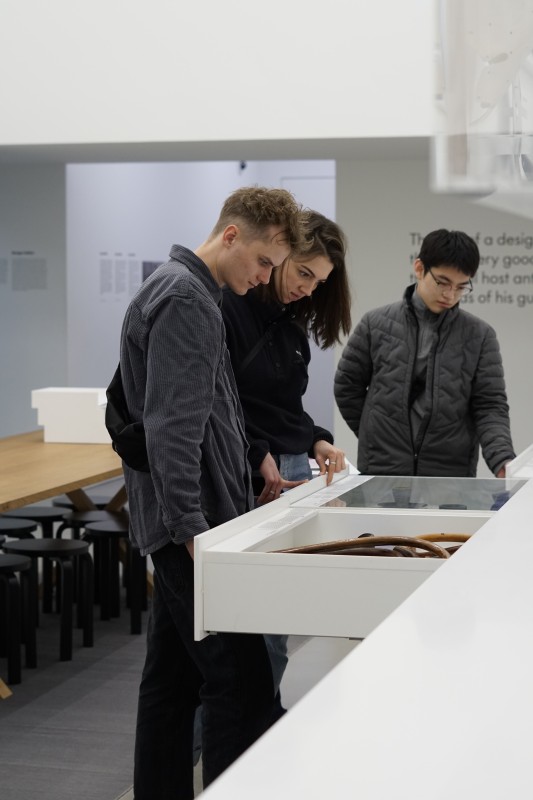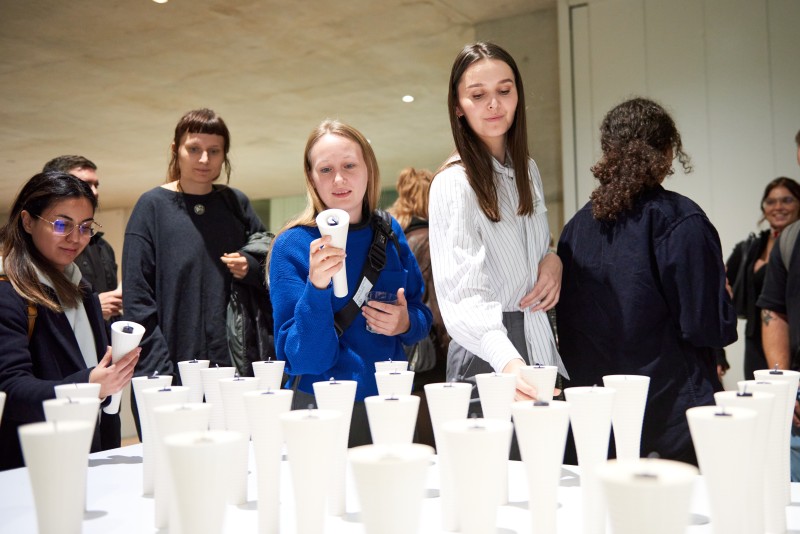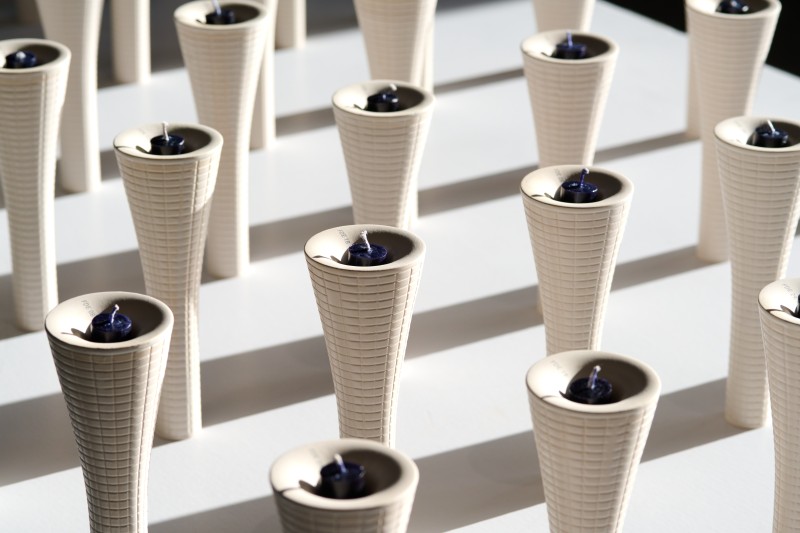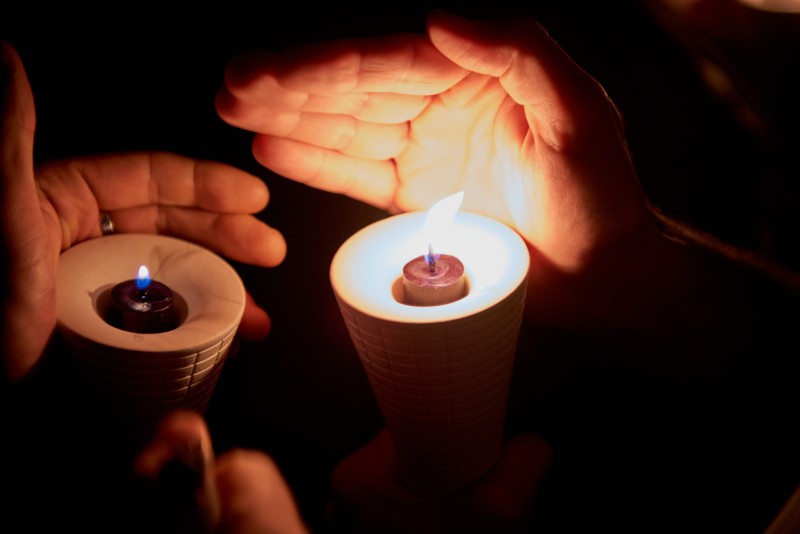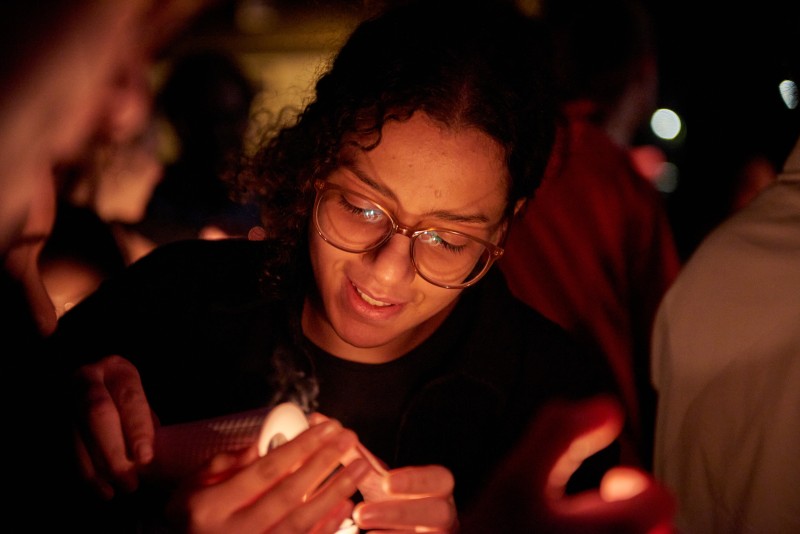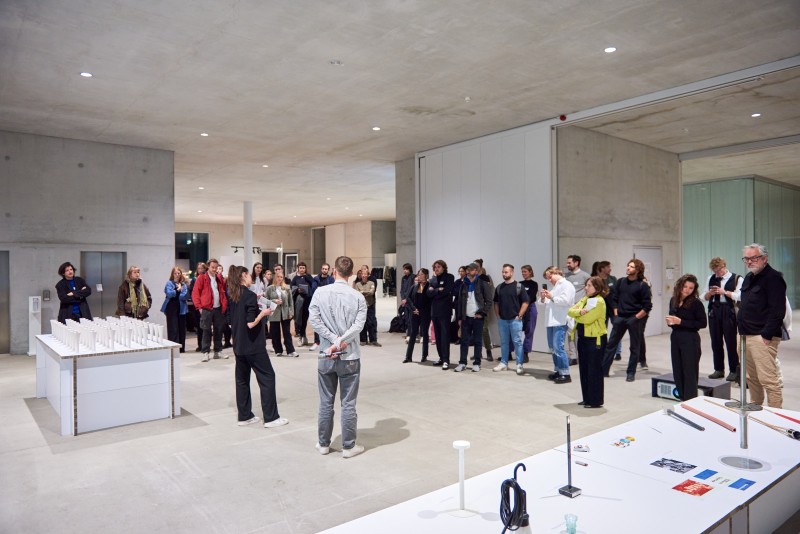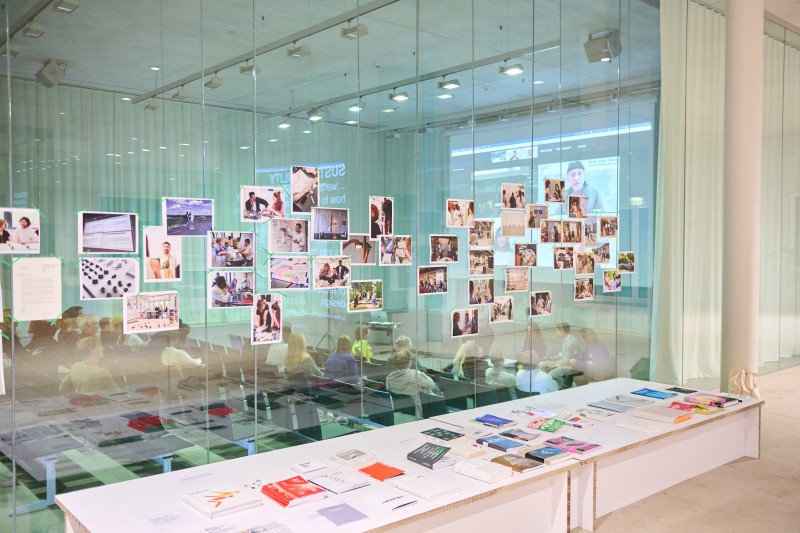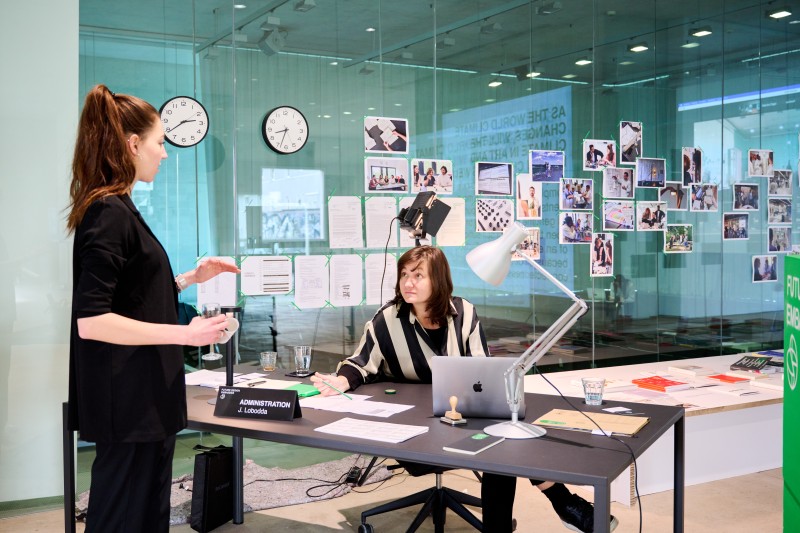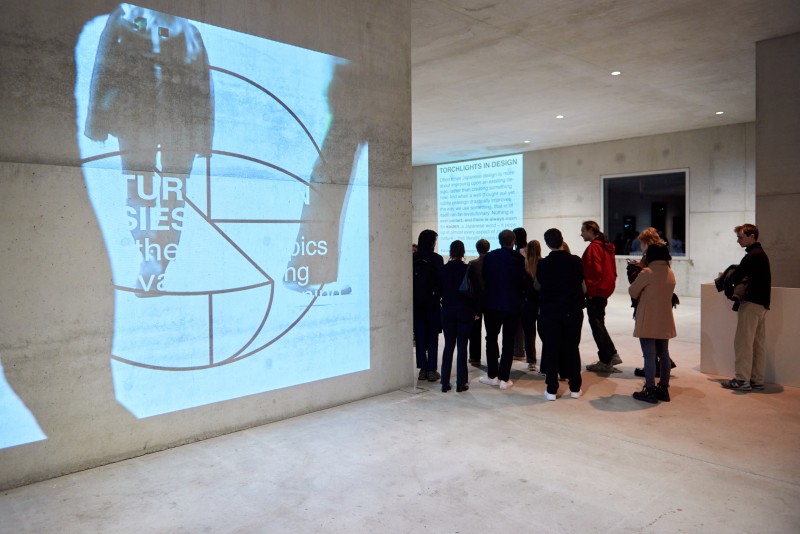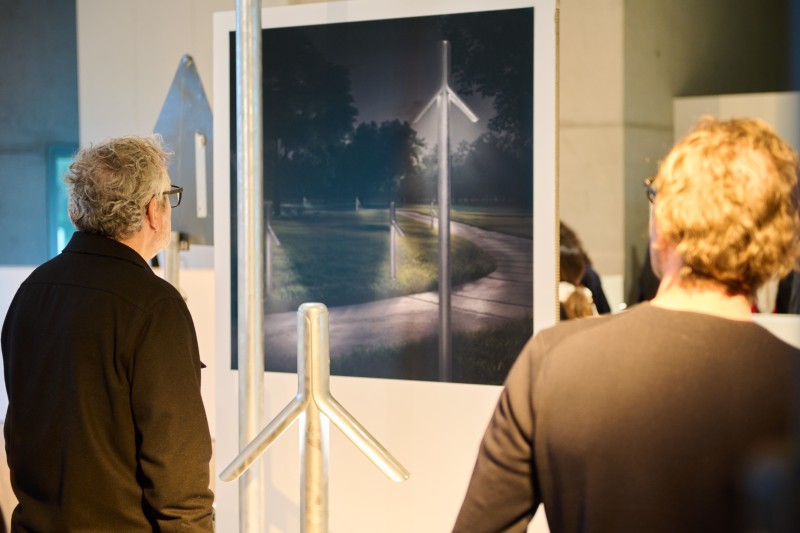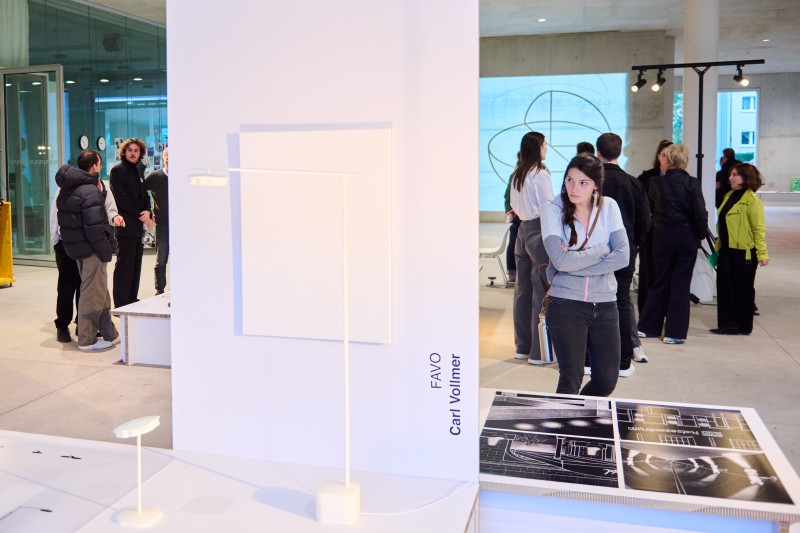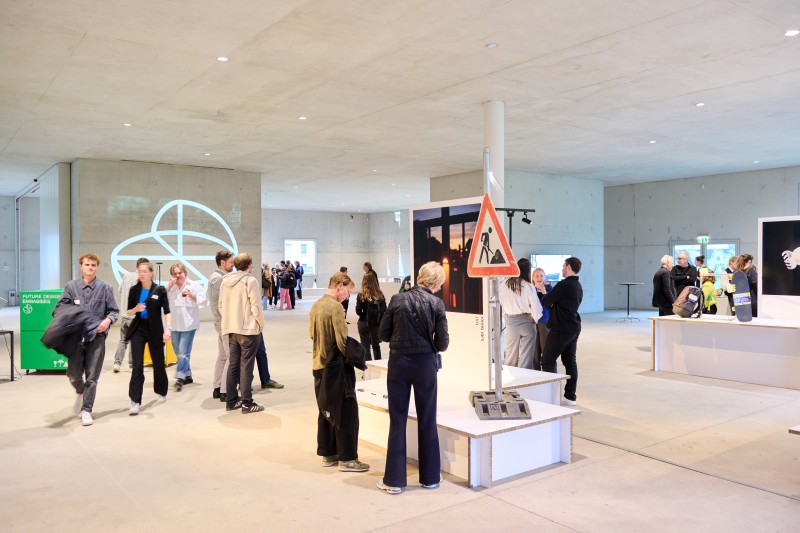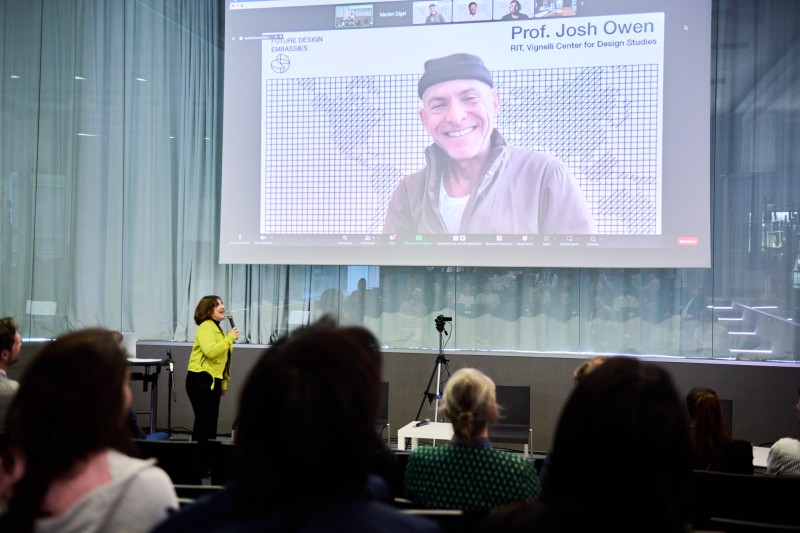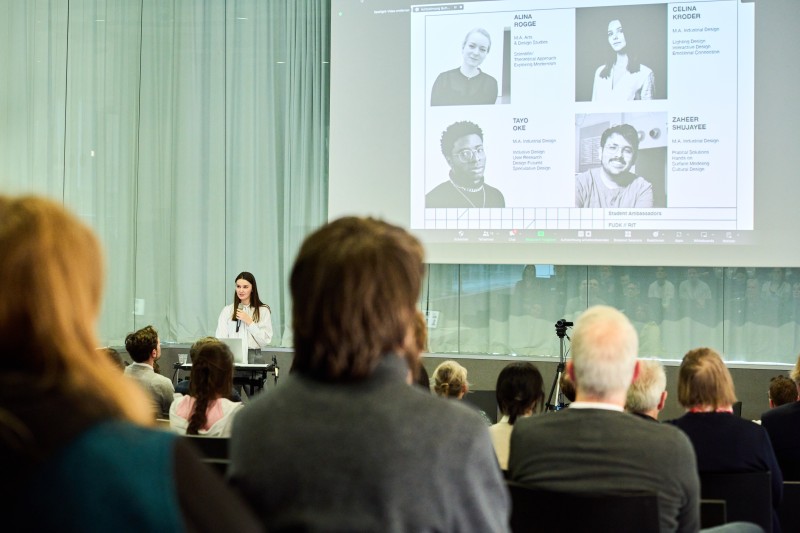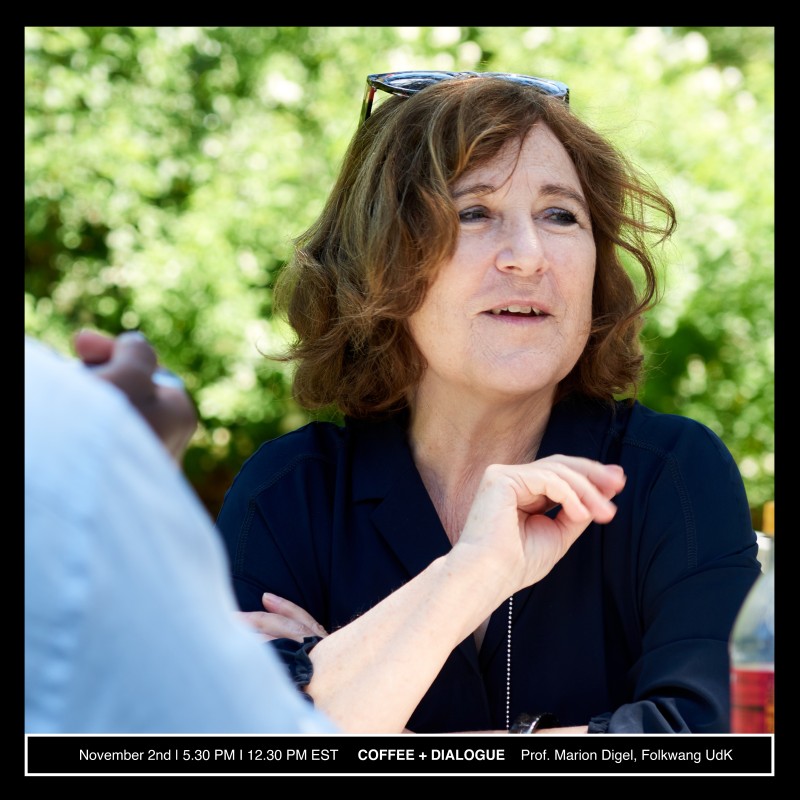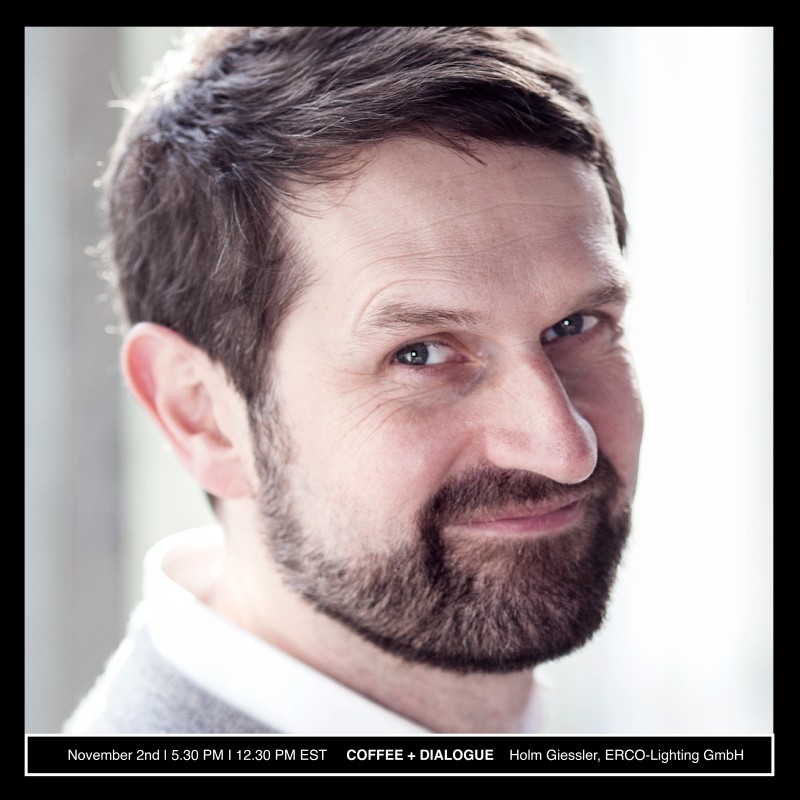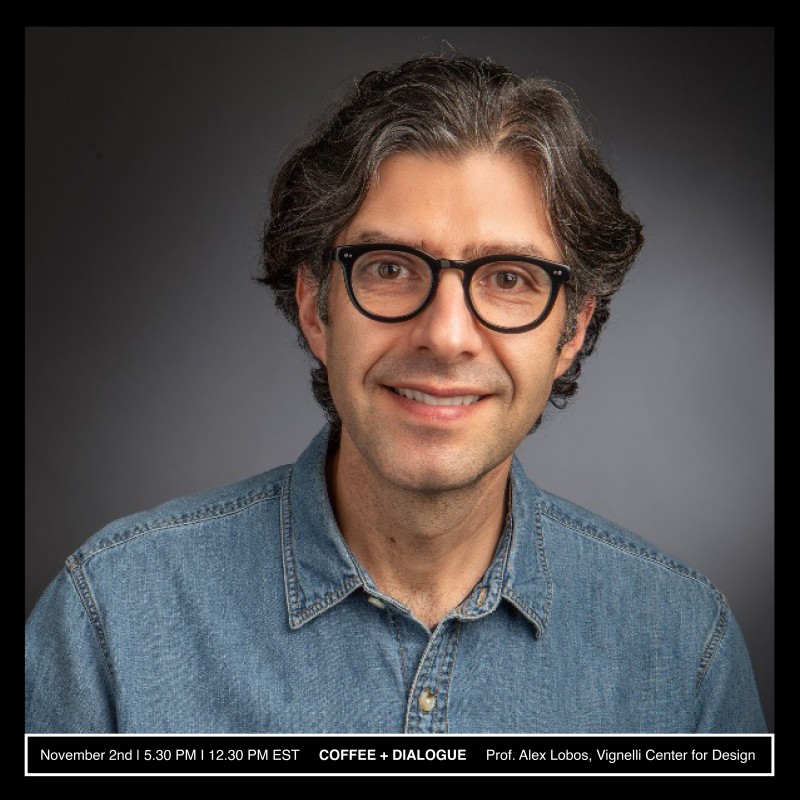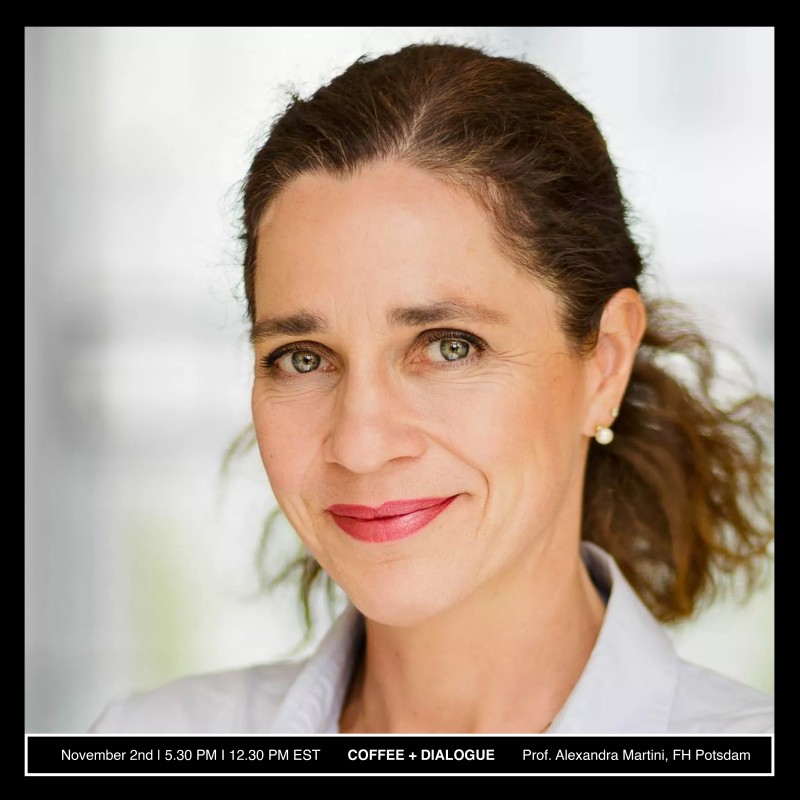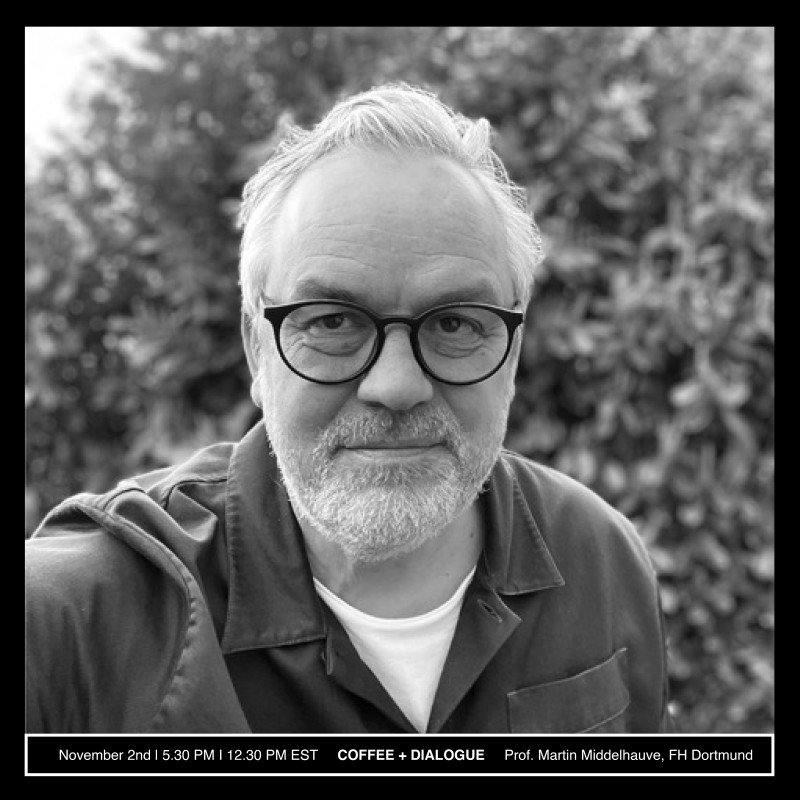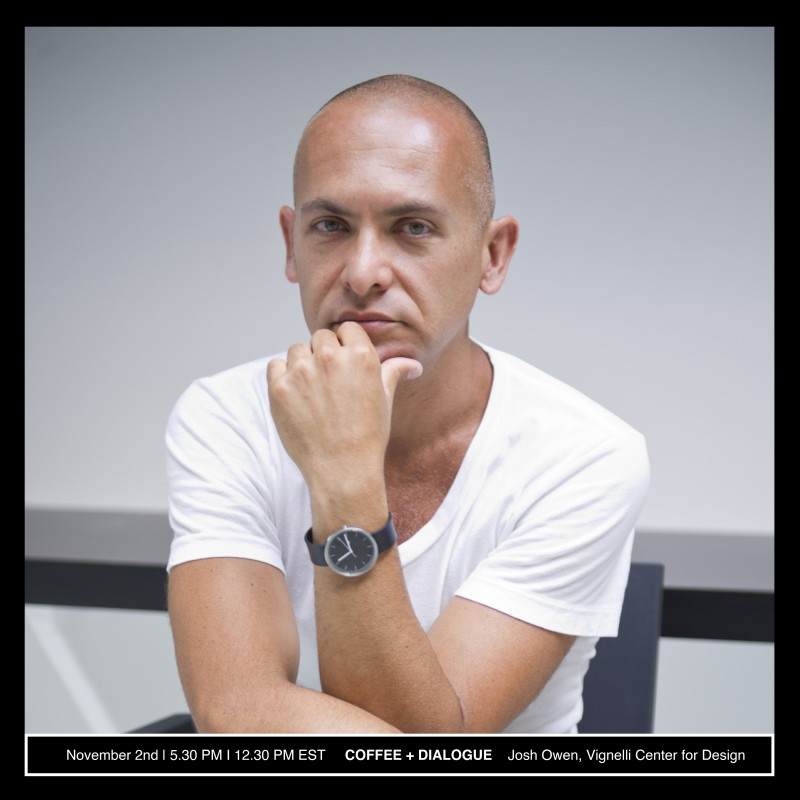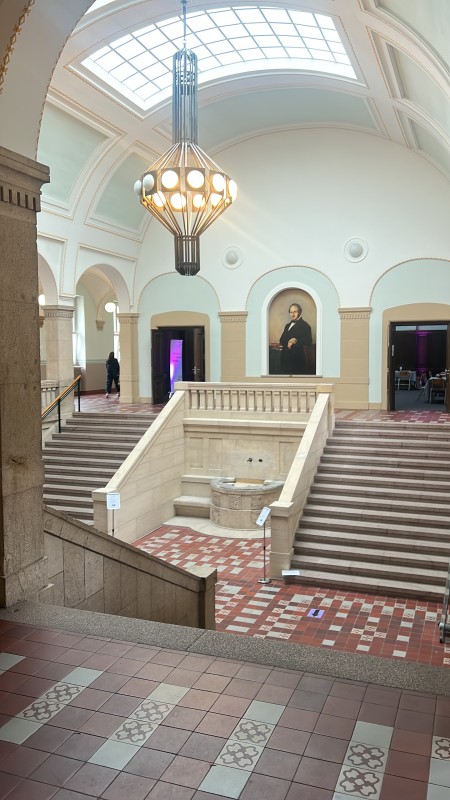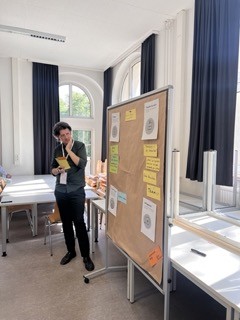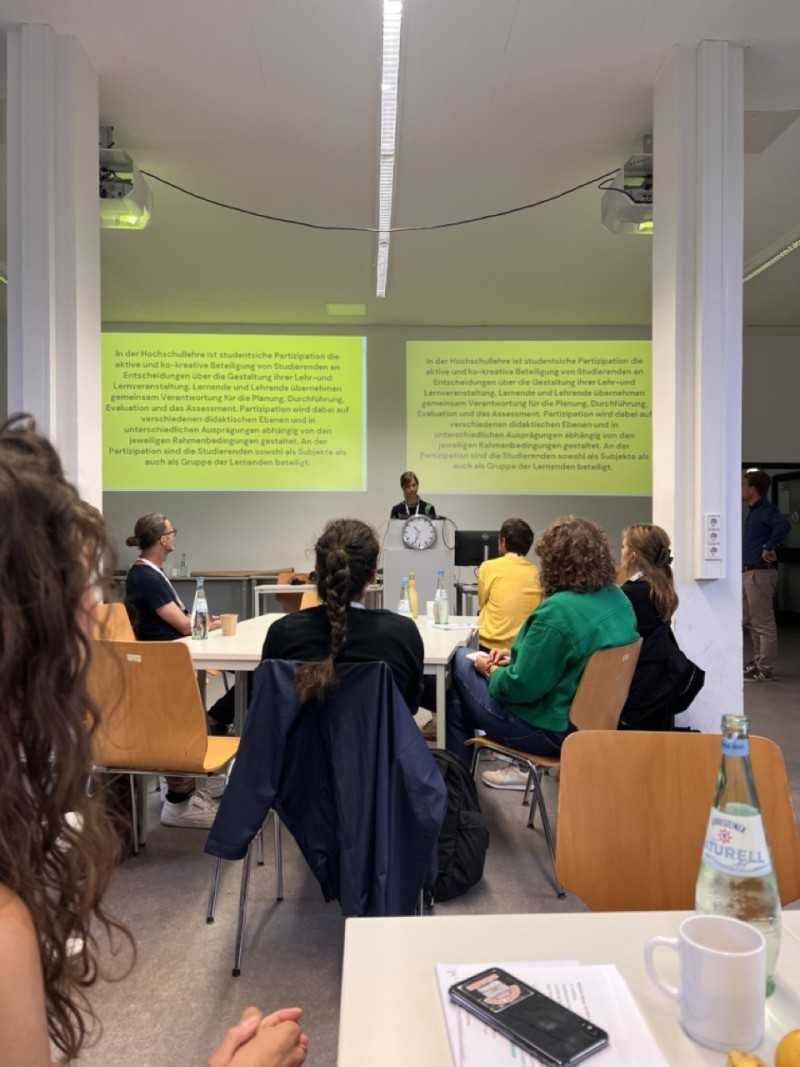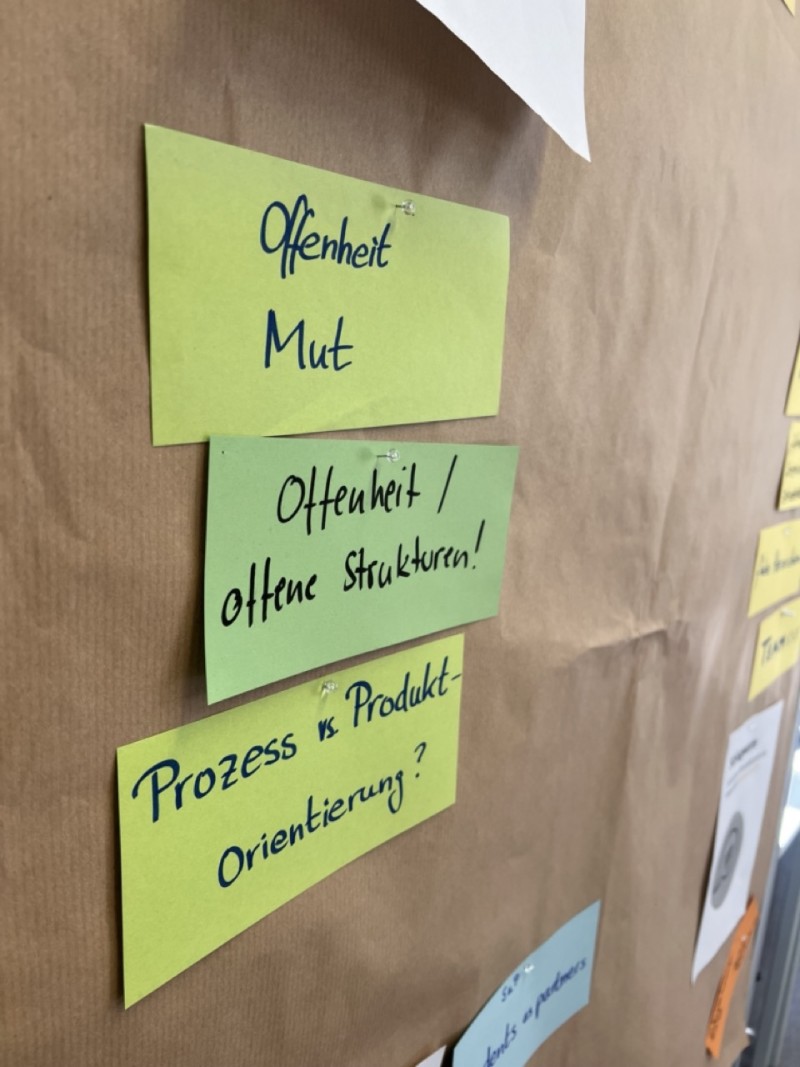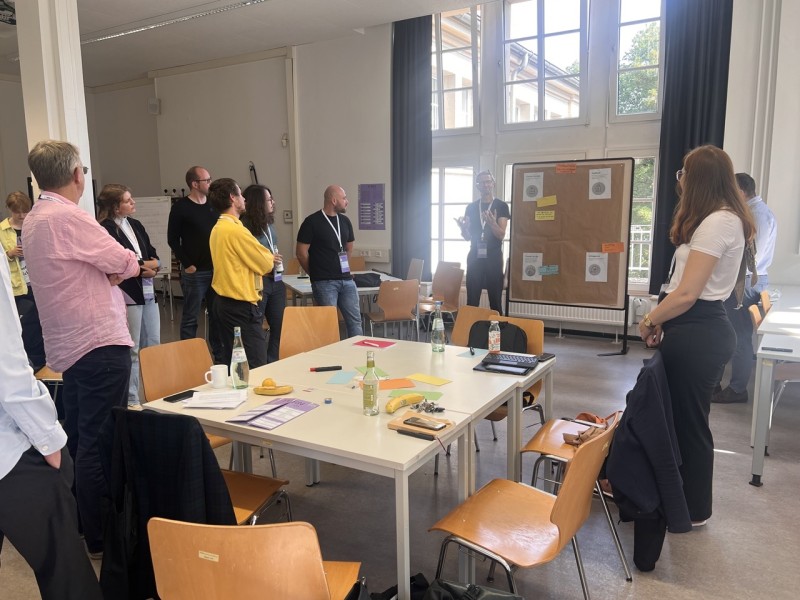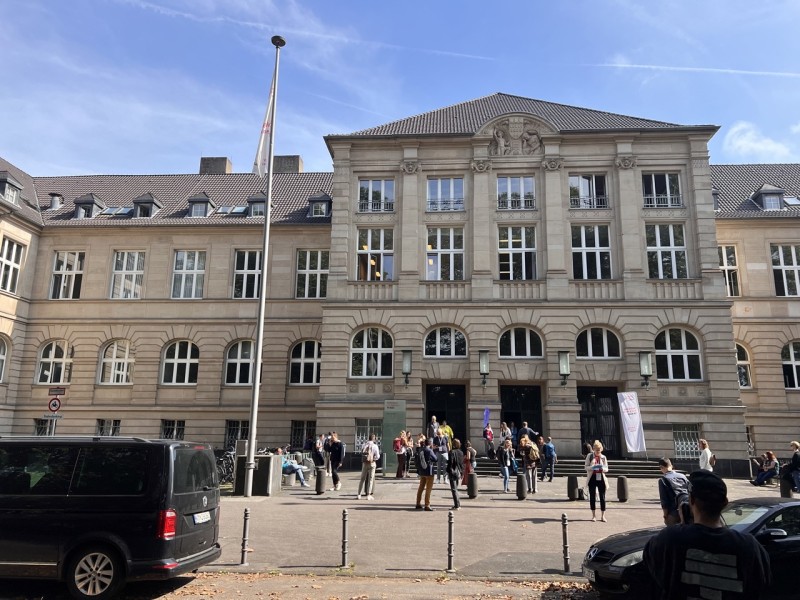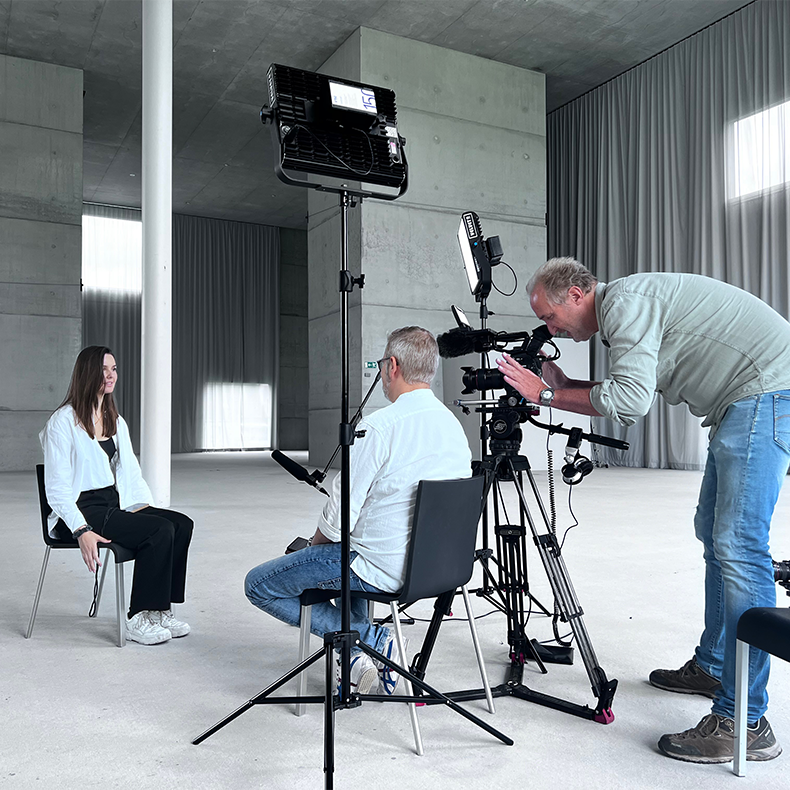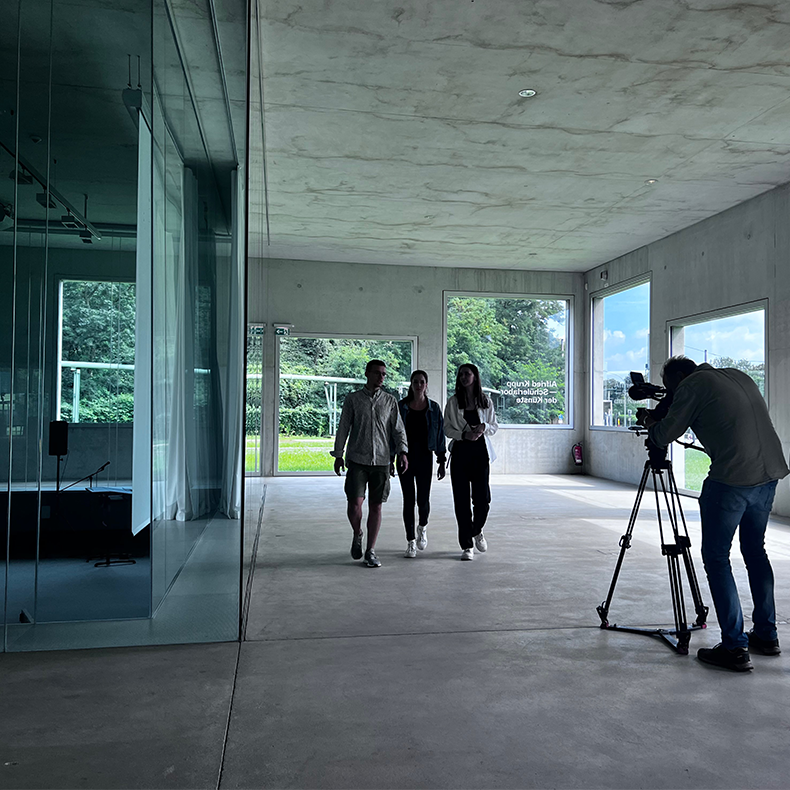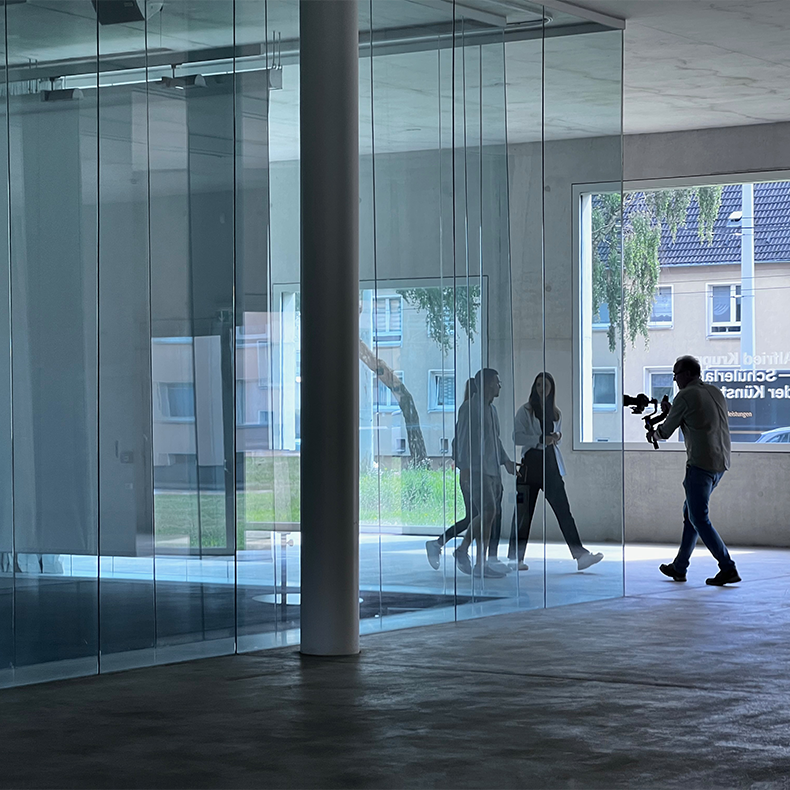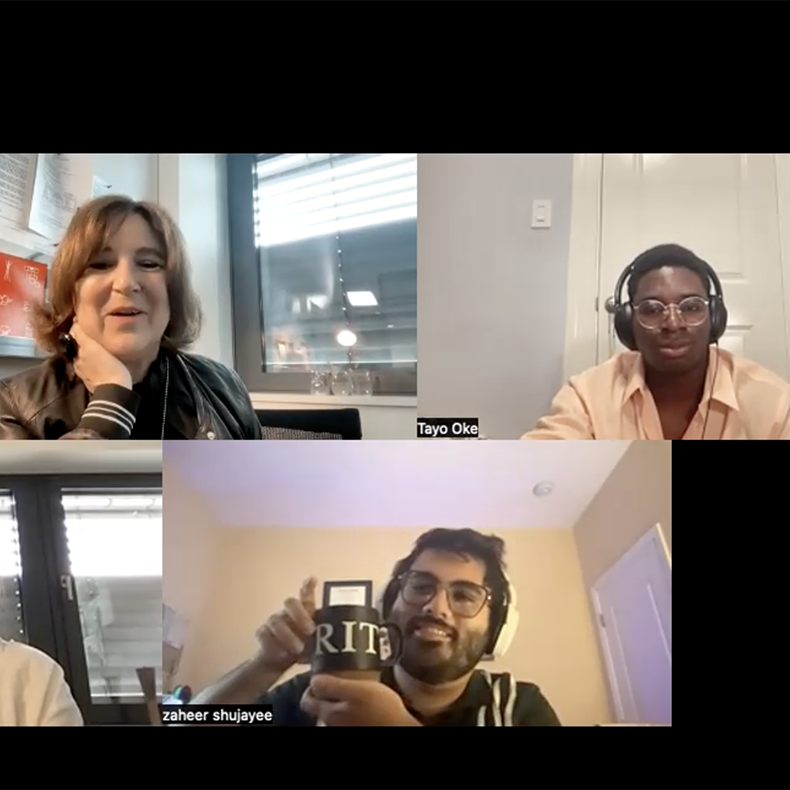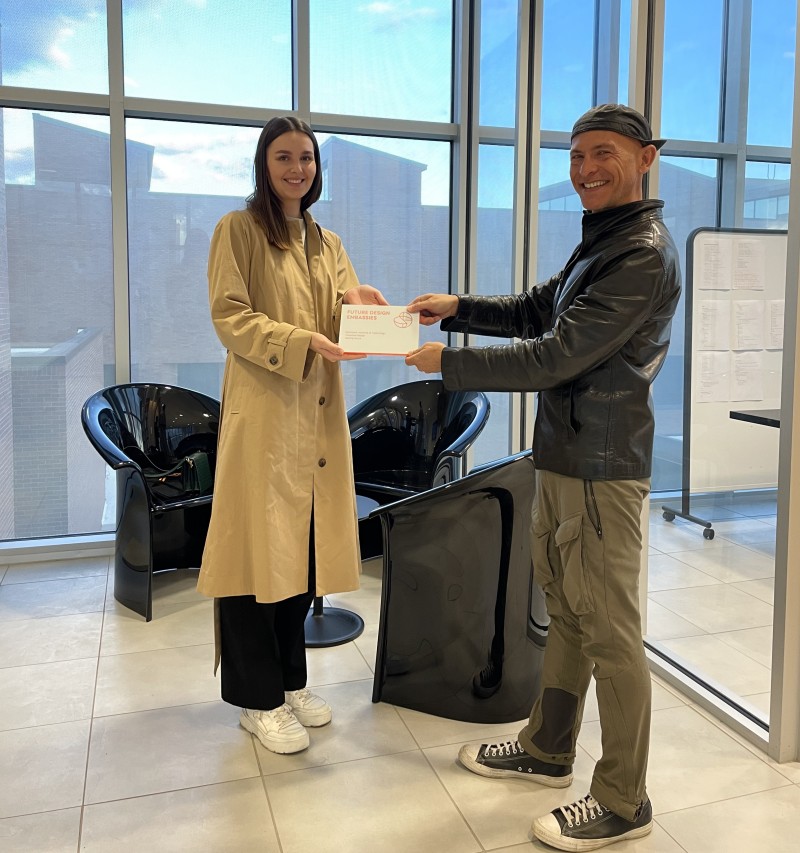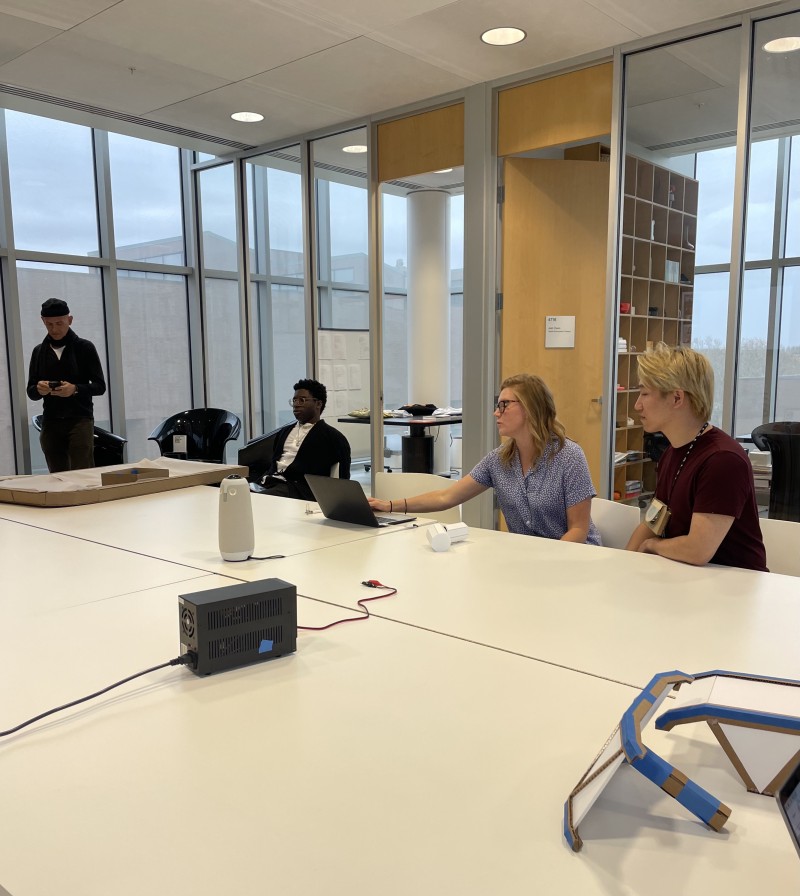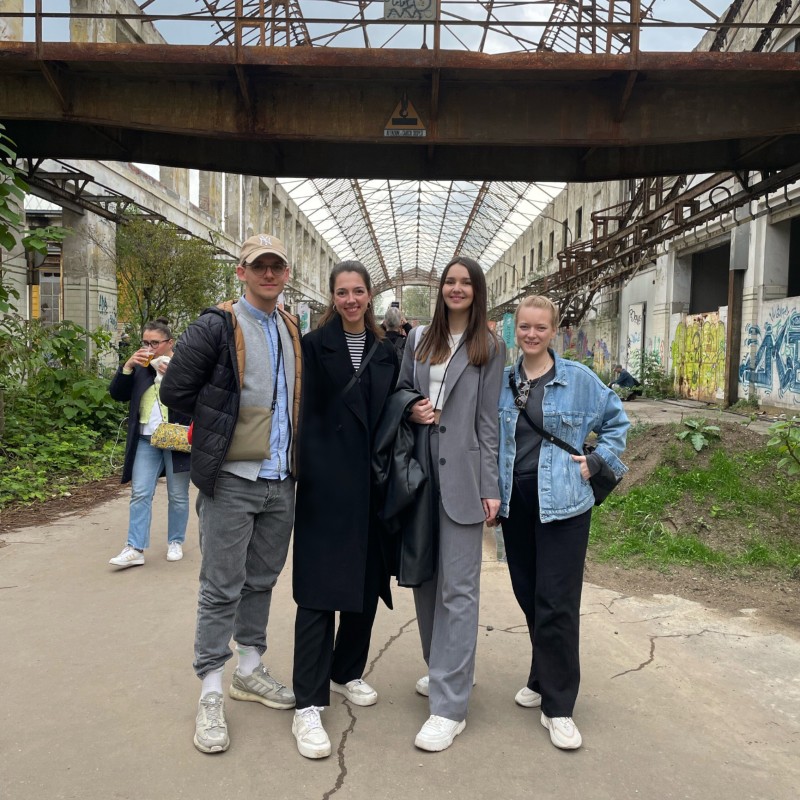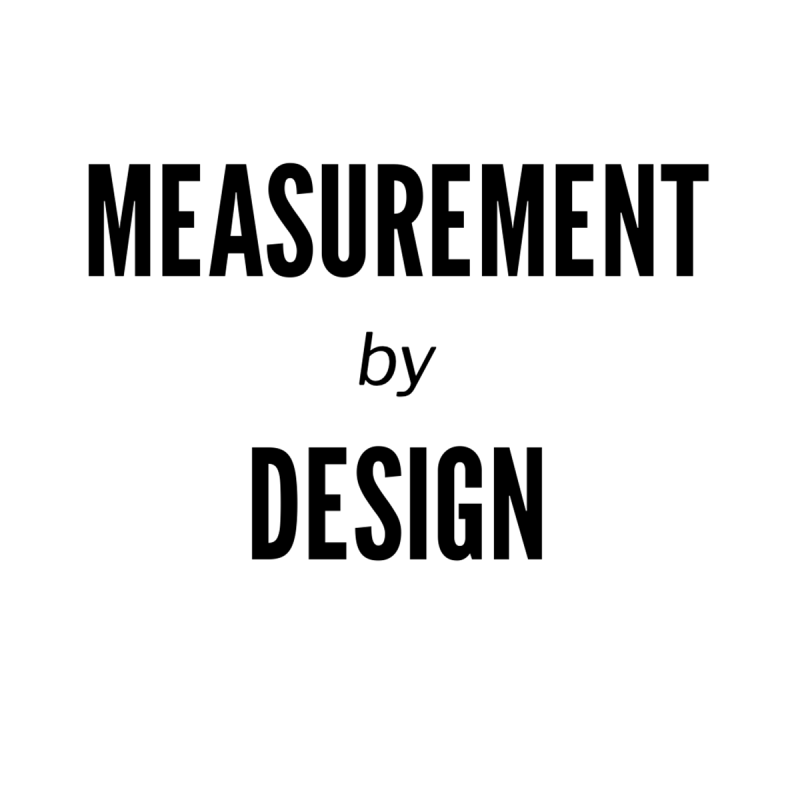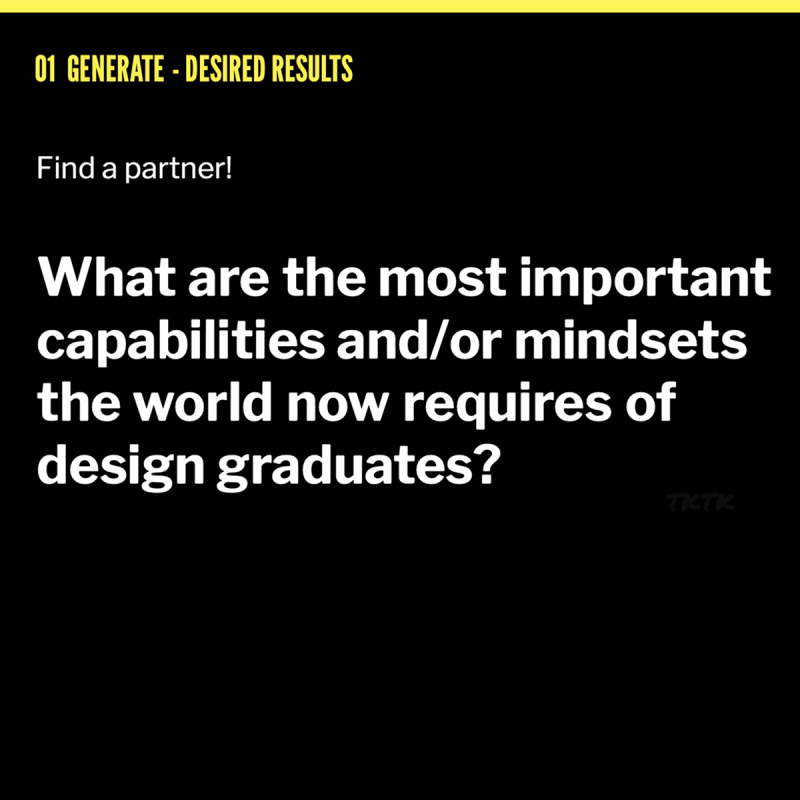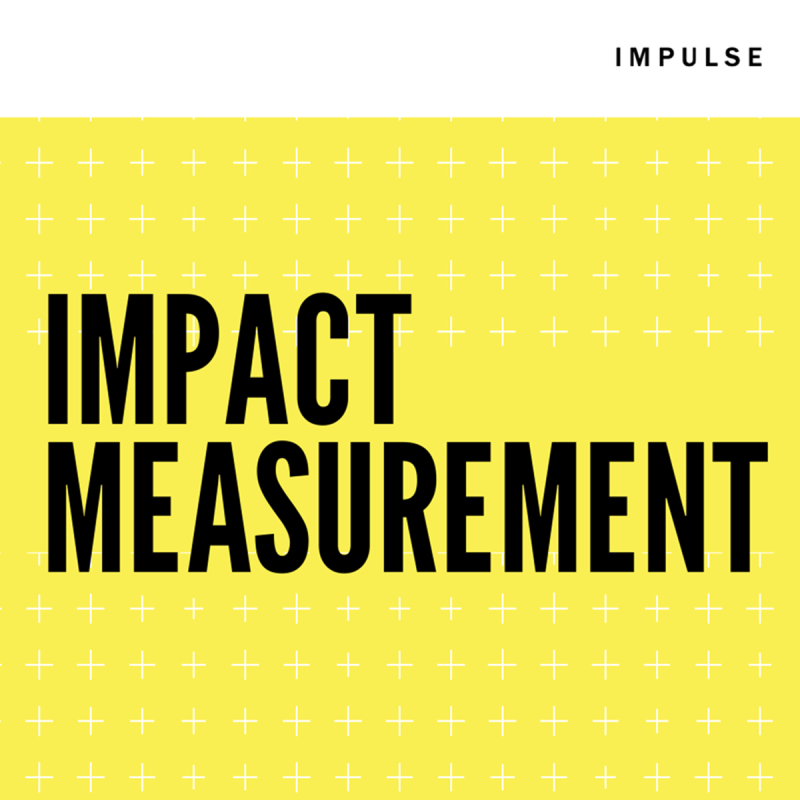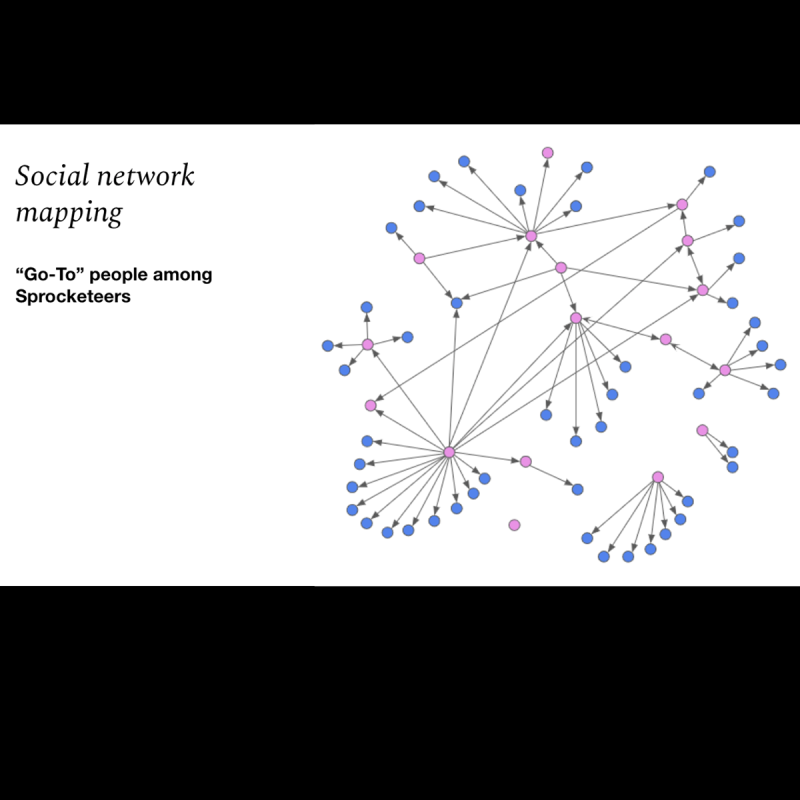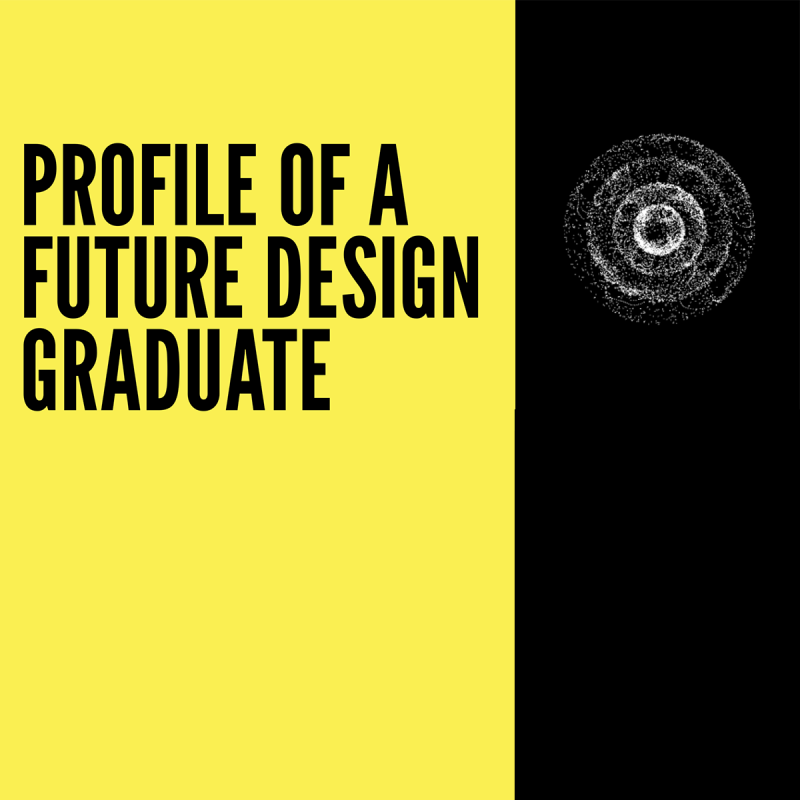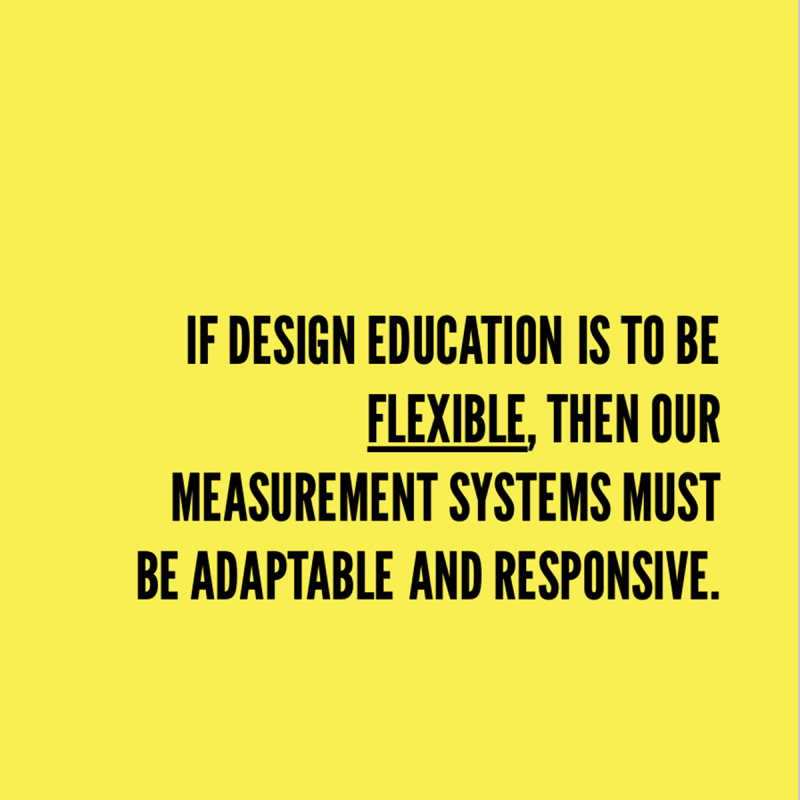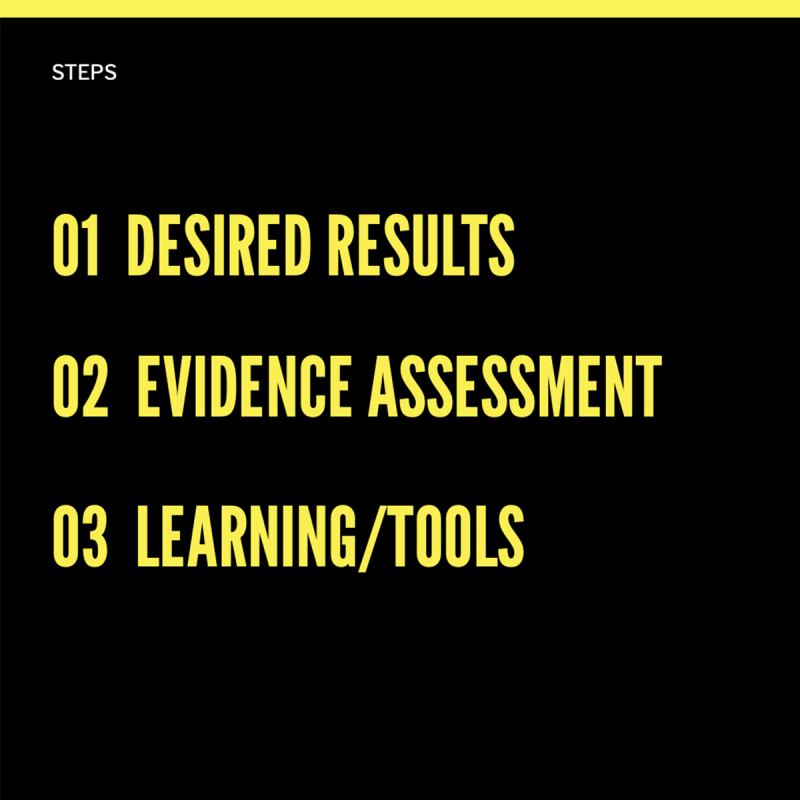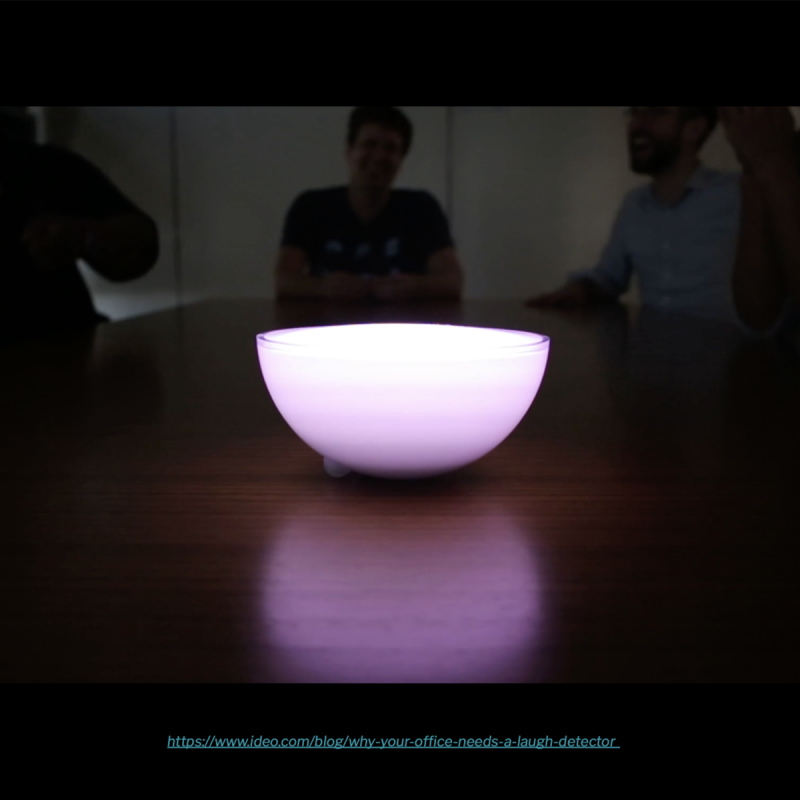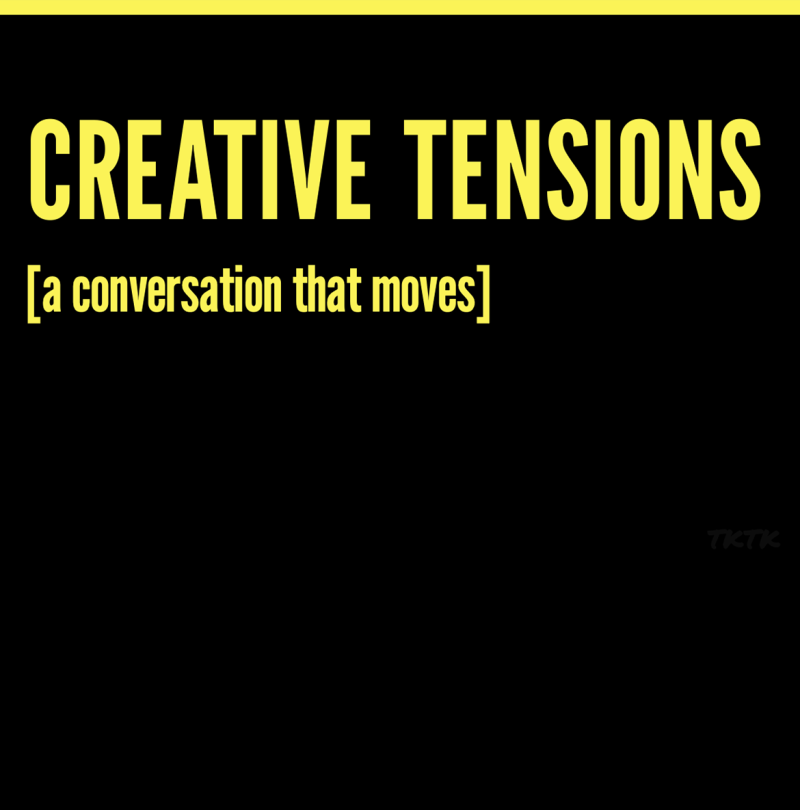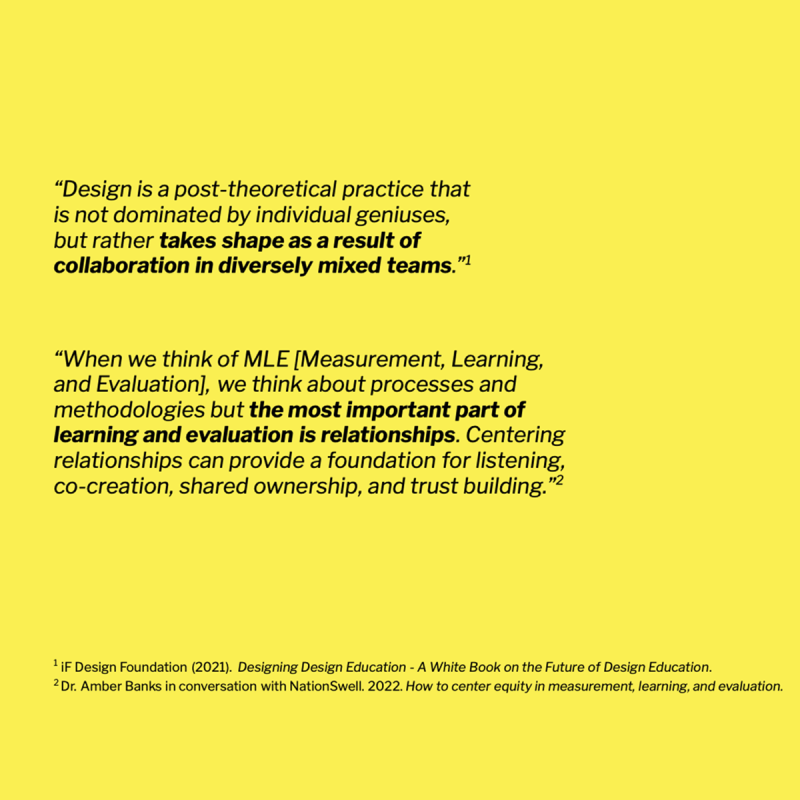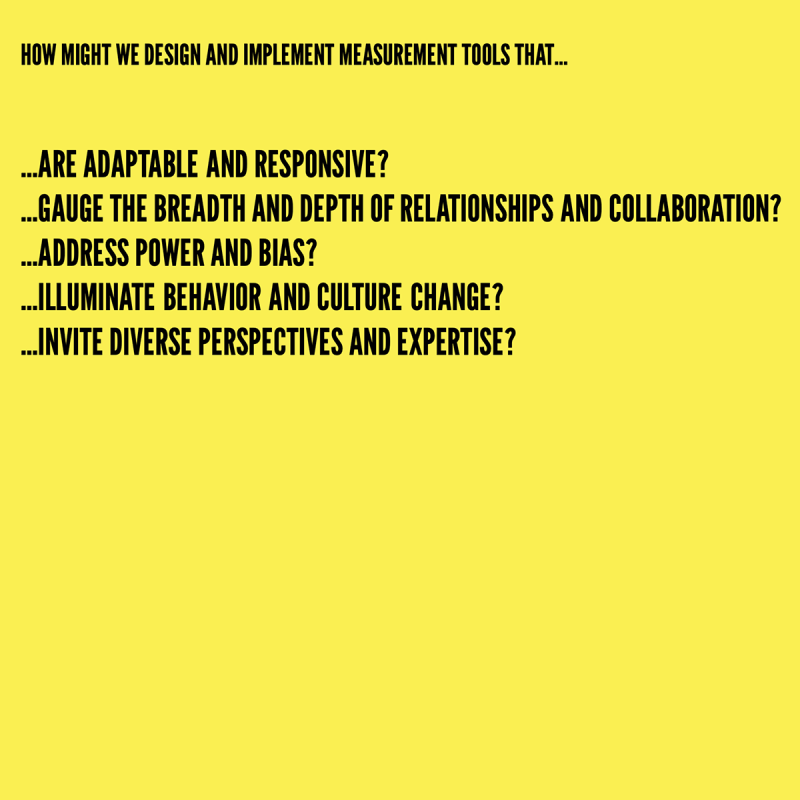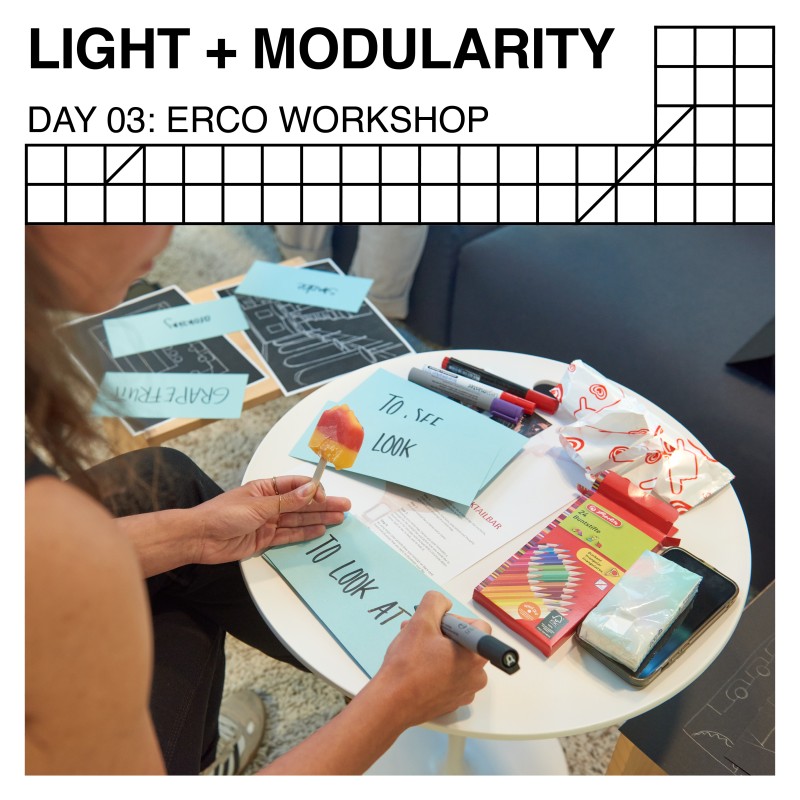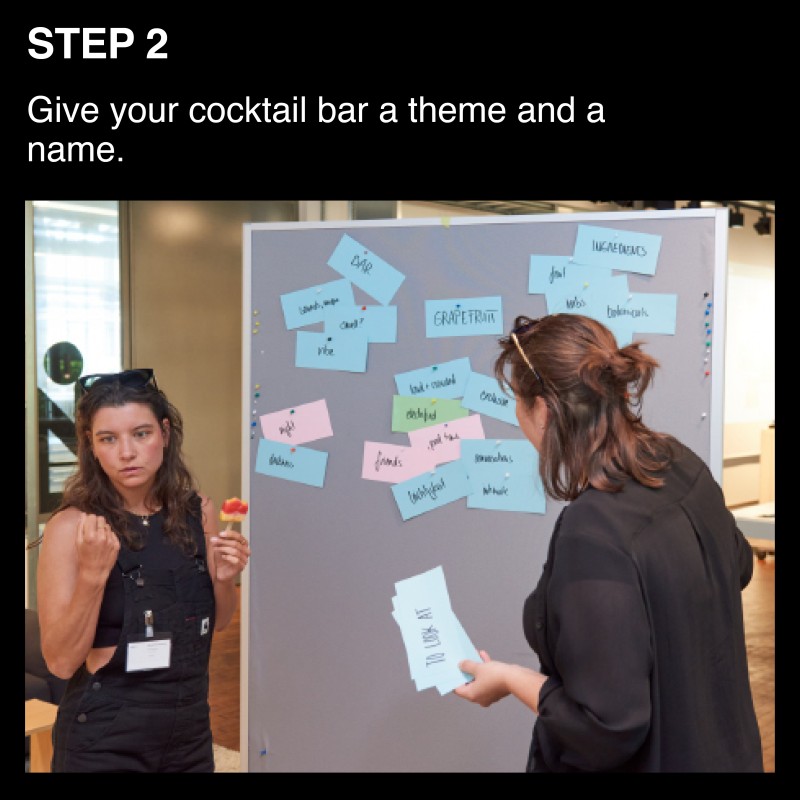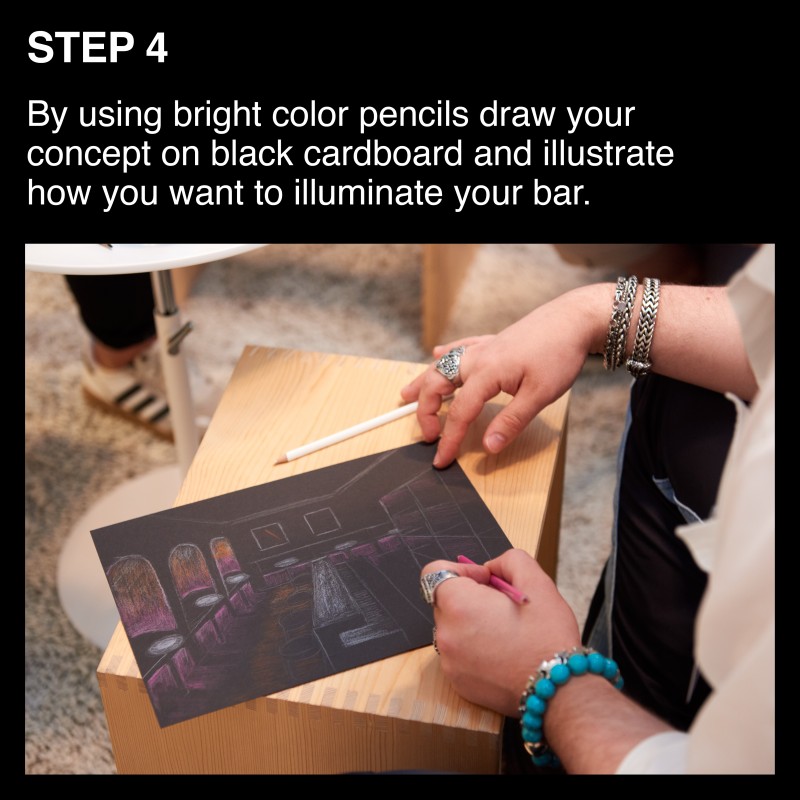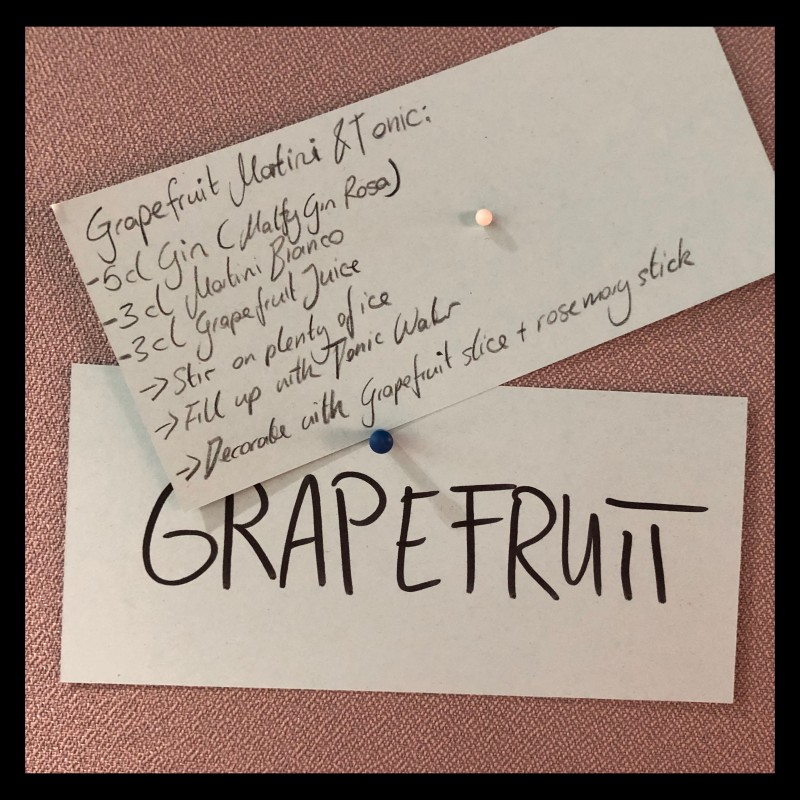Log Book
Vitra Design Campus excursion
Our excursion to the Vitra Design Campus in Weil am Rhein was a fascinating experience that offered a wealth of insights into the world of design and architecture. We visited the Vitra Design Museum, the Schaudepot and took an architectural …
Our excursion to the Vitra Design Campus in Weil am Rhein was a fascinating experience that offered a wealth of insights into the world of design and architecture. We visited the Vitra Design Museum, the Schaudepot and took an architectural tour.
The highlight of our visit to the Schaudepot was undoubtedly the Colour Rush! exhibition by Dutch designer Sabine Marcelis. The sorting of the design objects by color and the resulting emotional charge of this collection lent the exhibition a unique dimension. Marcelis' creative approach to the presentation of design objects prompted us to think about alternative exhibition formats and the clever use of color in product design. At the Vitra Design Museum, we were impressed by Iwan Baan's documentary photography exhibition. His visual representations of architecture and its construction processes in conjunction with architect Tsuyoshi Tane's installation for the "Garden House" on the Vitra Campus offered an impressive insight into the connection between architecture and photography.
The architectural tour of the campus, past the works of Tadao Ando, the Sanaa architects, Zaha Hadid and others, provided an impressive insight into Vitra's architectural diversity and innovative strength. The campus proved to be a lively place of dialog between a company and artists, architects and designers. This direct experience with real objects from the heyday of modernism not only reinforced our understanding of this era, but also highlighted Vitra's continuing importance as a pioneer of contemporary design.
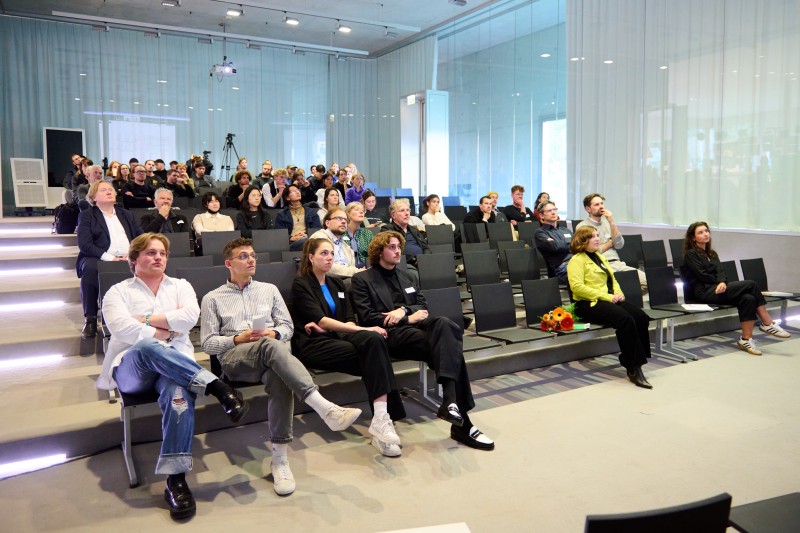
Résumé as a Future Design Embassador
As part of my participation in the research project "Future Design Embassies", a comprehensive investigation of the areas of design, dialog, knowledge transfer and modernity was carried out. A central concern of the research project was to promote open dialog …
As part of my participation in the research project "Future Design Embassies", a comprehensive investigation of the areas of design, dialog, knowledge transfer and modernity was carried out. A central concern of the research project was to promote open dialog as a means of achieving creative exchange and openness. The project atmosphere and way of working in workshops and collaborative meetings encouraged open discussion and facilitated knowledge transfer between the researchers, members of the Embassy and external participants.
Modernism as an epoch in design offered a wide range of topics, including sustainability, relevance, dialog and cultural exchange. These keywords acted as guidelines for the research and design, and were not just used as rhetorical elements, but shaped the methodological and practical approach to the challenges we encountered in the process. One example of this was the practical transfer of theoretical concepts into physical objects during the semester project.
During our research on the topics of peace and light, we succeeded in using an object as a tool to transform an abstract idea into a tangible result. By working closely with the ceramics workshop at the Folkwang University of the Arts under the direction of Fabian Bastert, we were able to mass-produce the "Torch" (peace torch) and at the same time integrate another element of modernity into our work.
The overall experience of the "Future Design Embassies" research project broadened my understanding of design and research in a design context. To finally address the research question, I personally feel that modernism offers us enough tools and ideas as inspiration and stimuli. However, in order to solve the problems of the 21st century, these need to be translated and adapted to today's world and times. At their core, however, they are still relevant. For example, the concept of appropriateness from the Vignelli Canon, coined by Massimo Vignelli, helps to examine issues. As M. Vignelli writes, appropriateness leads to: "... the right kind of media, the right kind of materials, the right kind of scale, the right kind of expression, color and texture.". It is clear that these "right" characteristics look different in today's society-centered design perspective than they did in the last century.
A TORCH FOR PEACE
We designed a torch which is a
TORCH FOR PEACE by definition –
By shape – functional and self-explanatory…
By material – precious ceramics, precious like peace itself…
By color – white like the color of a peace dove…
By surface …
We designed a torch which is a
TORCH FOR PEACE by definition –
By shape – functional and self-explanatory…
By material – precious ceramics, precious like peace itself…
By color – white like the color of a peace dove…
By surface – a grip with a texture of a grid, as a symbol for structure and stability…
As a serial produced object, for as many people as possible! (a very modernist notion…)
It will be lit with a candle to facilitate a calm flame…
But most of all it becomes a peace torch by a ritual –
Passing the torch light from one person to the next is sharing a light for peace.
Light it and pass it along to spread the idea that peace is possible!
With these words we gave out the 60 numbered torches to people whom we wanted to thank for what they were doing, to people who were helpful to our research and to people in the position to spread the wish for peace like our Foreign Minister Annalena Baerbock.
Mrs. Baerbock received her torch through the mail since her secretary let us know that she didn’t have time for a personal meeting in Berlin.
But back to the beginning:
The expression of “Passing the Torch” stood for the way we collaborated with the Vignelli Institute for Design Studies from the start – One team of one institute would launch a subject to work on, communicate the methods and results to the other, so that the other team could go on from there, take their findings back to the original team and so on…
When we finally did decide on the subject of a torch after many discussions for our research-by-design project, it was in the early stages of the war in Ukraine. We were determined to find a topic for a product with purpose, a product that can make an impact. The torch is a highly emotional object which is loaded with many negative and positive meanings, it definitely is an artefact that has made impacts in the past.
So, we asked ourselves: What if we could design a torch with a positive meaning?
What if we could design a TORCH for PEACE? Today, with even more news of aggression and war in the world, this seems to be more relevant than ever. (read more here soon)
Event: 1-Year Future Design Embassies – a celebration and presentation!
On November 2nd we celebrated “1 Year Future Design Embassies – International Students Ambassadors” with a big event at the Saana Building on the World Heritage Site, Zollverein. We, the embassy team of Folkwang University of the Arts, Karen Druebert, …
On November 2nd we celebrated “1 Year Future Design Embassies – International Students Ambassadors” with a big event at the Saana Building on the World Heritage Site, Zollverein. We, the embassy team of Folkwang University of the Arts, Karen Druebert, Celina Kroder, Lilli Seiler, Carl Vollmer, Alina Rogge and me staged an exhibition and a symposium on the whole first floor of the SANAA Building for many interested visitors to present everything we did in the one-year research project funded by the “Stiftung für Innovative Hochschullehre”.
The whole event was hybrid, so that our partners from RIT and its Vignelli Centre for Design Studies, our American Student Ambassadors Tayo Oke and Zaheer Shuyajee and many other interested guests could join in on the event from all over the world.
Our guests were greeted by an interactive projection with the most important quotes from our research (designed by Anastasija Delidova) and the “Embassy Secretary” sitting in a replica installation of our embassy office, including our two clocks with the two time zones from CET or Essen and EST for Rochester. There also was our relevant literature and photos of the activities in this past year on display.
The event featured exhibitions of the design of luminaires, resulting from the workshop “Light and Modularity, and a “Coffee + Dialogue” panel about the research question “Backtracking Modern Times. Are the ideas of Modernism sufficient to solve 21st Century problems?" Last but not least it culminated in the presentation of our research-by-design project “Torch:light – A Torch for Peace”.
One of the highlights of the afternoon was the presentation of the work of the International Student Ambassadors. Celina Kroder, Tayo Oke and Zaheer Shuyajee talked about their experiences as Ambassadors and about conducting a workshop for Design Graduate Students in the other country at the partner University. They talked about cultural differences and similarities, about their exchange on views and expectations on design in the 21st century and about their Workshop concepts of the Workshops “Light + Liminality” and “Light + Modularity”. Both topics were about light and centered around ideas of Modernism to make them comparable.
In “Light + Liminality” modernist designers of the 20th from Italy and the United States, Lella and Massimo Vignelli and Ingo Maurer representing a designer in the 20th century from Germany were reflected in terms of their philosophies and design processes and practices and then taken as models for the students design concepts, meeting the challenges of the 21st century.
In “Light + Modularity” the modernist concept of modularity, conceived for industry and mass-production, was analyzed and reflected by designing Urban Lighting concepts to support more sustainable production methods for the challenges of the 21st century such as energy crises, climate change and changing urban landscapes. This workshop was supported by Holm Giessler of the ERCO lighting company, a German producer of lighting systems for public applications all over the world with its Corporate Identity coined by the modernist Designer Otl Aicher.
The results of this workshop were exhibited during the event as 1:1 prototypes and were presented by the master students who had designed them. Due to the limited time of the event, the presentations were only very short so that the individual concepts and how those reflected the contents of the research topic “Backtracking Modern Times. Are the ideas of Modernism sufficient to solve 21st Century problems?" were perhaps not totally clear to the audience. Therefore, individual descriptions of each design will be found here in the archive soon.
After a coffee break in which the audience in presence as well as the online-audience (a camera was moved through the exhibition space) had the chance to view the exhibitions and after everyone was equipped with a coffee, the Panel discussion “Coffee + Dialogue” started, moderated by Student Ambassador Karen Druebert. For the panel we were happy to welcome prestigious guest experts, each representing various aspects of our research. These were:
• Prof. Josh Owen from the Vignelli Center of Design Studies RIT for TIMELESSNESS
• Prof. Alex Lobos, Director of the School of Design at RIT for INTERCULTURAL DIALOGUE
• Prof. Martin Middelhauve from FH Dortmund for INTERCULTURAL DIALOGUE
• Prof. Alexandra Martini from FH Potsdam for DESIGN METHODS
• Holm Giessler, Industrial Designer at ERCO GmbH for MODERNISM AND INDUSTRY (and today’s challenges)
• Prof, Sebastian Goldschmidtböing from KISD (Köln International School of Design) for MODERNISM + FUTURE
• Prof. Marion Digel from Folkwang University of the Arts for MODERNISM + FUTURE
The central question of our panel “Backtracking Modern Times. Are the ideas of Modernism sufficient to solve 21st Century problems?" was discussed from many perspectives:
The panel guests were aware of Modernism in Design as a culture of mostly western, mostly white and mostly male background. Yet, among others, it is still one major influence in design education and as such offers young designer’s criteria of what may be good design today. However, this shouldn’t happen without reflecting and questioning these critically and individually. OPENNESS and RESPECT for diverse perspectives and design solutions rooted in different cultures are central requirements for designing in changing societies. A very nice example here is the (loud)speaker design CHECHO by our panel participant Alex Lobos who used elements of Guatemalan signage and crafts to integrate this cultural heritage in a technological product. Within our diverse societies today, it seems more important than ever for designers to make sure that there are offers for anyone outside the respective dominating culture.
Yet the modernist notion of UNIVERSAL DESIGN or TIMELESSLESS may not be totally obsolete as panelist Josh Owen displayed with his impressive archeological sample of script on stone from thousands of years ago, comparing it to the shape of the object of a smart phone. Both objects were shaped to fit the human hand and the script was designed in a way that it was legible for its user. With this example he reminded us that there are unifying elements which define essential human needs and the shapes of human artifacts. The modernist ideas of finding unifying aspects and similarities may still be useful when designing in intercultural contexts.
For design students, modernist ideas can offer some orientation of what could be good design, rather than the contemporary impression, supported by Social Media that “anything goes”, which leaves them clueless sometimes. From modernist designers and thinkers such as the protagonists of the Bauhaus, the HFG Ulm and more specific from reading what Otl Aicher or the Vignelli’s wrote about the idealistic aims of their own work, we learned, that to them, the central quality of good design is the attempt of making a better world for as many people as possible. Maybe one of the most useful aspects which young designers can learn from Modernism today is its idealism!
The challenges in the 21ST. Century are very complex – Globalized economies, diminishing democracies, new wars, new tools such as AI, the global threat of climate change and more – all these are huge and complex challenges for young designers. And even our panel seems to have risen new questions – for instance nobody really knows how AI will develop in the near future, even though many of us are using its applications already in many ways and some designers have made first experiences using it for design.
Yet, maybe some of the modernists approaches and methods to create clarity and simplicity can be applied as models for a better understanding of the complexity of these big questions and challenges today. And maybe they can still help to find appropriate design solutions.
Concrete ideas and principles such as MODULARIZATION or MINIMALISM in design may still be useful concepts for design in the 21st century when it comes to finding more sustainable solutions designing within the global economy. ERCO for instance uses these principles to cover the very diverse demands of clients from all over the world, yet use a minimal number of parts to avoid production waist, to make the products easier to repair and to exchange their parts.
However, these principles stand for making the best within the system of consumerism instead of questioning the RELEVANCE of the product itself. This may be the responsibility of designers today more than ever. The RELEVANCE of new products needs to be evaluated in the light of the problem of Climate Change and fair distribution of goods. Young product designers today sometimes face the dilemma whether they should design at all. But there may be good reasons to design and spread a certain product and designers can be in the position to make sure, that it’s designed sensibly! As it would be the advice of Massimo and Lella Vignelli.
With our research-by-design project Torch:Light – a TORCH for PEACE, we tried to do just that – we wanted to design a product sensibly with a relevant purpose. The presentation of this torch was a very emotional and beautiful ending of our event. We chose the object of a torch for our design research because it is a highly emotional object which is loaded with many negative and positive meanings. What if we could design a torch with a positive meaning? What if we could design a TORCH for PEACE?
We decided to approach the topic by ways of a Modernist design process and wanted to produce as many torches as possible to make it accessible to as many people as possible. With the method of cast ceramics we were able to produce a limited edition of 60 pieces.
Read more about the design of a TORCH for PEACE and the torch research in the Logbook entry "A TORCH for PEACE".
COFFEE + DIALOGUE final panel
Welcome to our final COFFEE + DIALOGUE panel!
We have invited a variety of experts from the design field to discuss INTERCULTURAL DIALOGUE, OPENNESS, TIMELESSNESS, INDUSTRY and the FUTURE - all within the framework of our research question:
Backtracking Modern Times. Are …
Welcome to our final COFFEE + DIALOGUE panel!
We have invited a variety of experts from the design field to discuss INTERCULTURAL DIALOGUE, OPENNESS, TIMELESSNESS, INDUSTRY and the FUTURE - all within the framework of our research question:
Backtracking Modern Times. Are the ideas of Modernism sufficient to solve 21st Century problems?
Future Design Embassies at TURN Conference in Cologne
On September 14, 2023, the Future Design Embassies team, (represented by Sebastian Goldschmidtboeing, Karen Drübert and Celina Kroder) introduced the didactic principle of Future Design Embassies at this year's TURN Conference in Cologne.
The TURN Conference is a series of conferences …
On September 14, 2023, the Future Design Embassies team, (represented by Sebastian Goldschmidtboeing, Karen Drübert and Celina Kroder) introduced the didactic principle of Future Design Embassies at this year's TURN Conference in Cologne.
The TURN Conference is a series of conferences initiated by the Foundation for Innovation in Higher Education (StIL), which kicked off in Kiel in 2022 and is now entering its second round in Cologne. It is an annual exchange platform for teaching and learning at universities. TURN stands for change of perspective, courage to change, openness and exchange, which also represent the core values of the FDE.
It is up to the universities to define the guiding principles of the TURN Conference, to fill it with life and topics, and to take on their own "turn" hosting the annual conference. Each year, a different university or university cooperation hosts the conference.
Setting future-oriented topics, to enable a change of perspective with methodically and didactically innovative conference formats, to bring university members from different groups of actors into an exchange. These are the demands placed on TURN, because teaching and university development are best achieved together with all the stakeholders involved. Our research in the context of Future Design Embassies fits seamlessly into the main theme of this year's Turn conference. Our contribution to the conference consisted of a 15-minute presentation about the research findings and the didactic principle behind the different formats, such as workshops and coffee & dialogues. Through these formats we try to answer our overarching research question and presented our project to an audience of faculty and university members.
After all the presentations from representatives of different universities about topics like: active integration of students in teaching, digitalization in teaching and other integrative, didactic approaches in the university context, the lecture series was wrapped up by a joint feedback and discussion session. The overall feedback was very positive. Our project was perceived as encouraging, courageous and creating a flat hierarchy amongst students, professors and leaders in the design field.
Video Take at the Future Design Embassies
On Wednesday we had a professional video team here from "Bewegtbildbüro Ohlendorf", commissioned by our grant giver "Stiftung Innovative Hochschullehre". It is an honor that our project has been selected for it.
It is amazing how much time and effort it …
On Wednesday we had a professional video team here from "Bewegtbildbüro Ohlendorf", commissioned by our grant giver "Stiftung Innovative Hochschullehre". It is an honor that our project has been selected for it.
It is amazing how much time and effort it takes to film for a 3 minute video! It was an interesting experience, trying to capture the complex contents of our research project in such a short amount of time. However the film team was so engaged and professional that they were able to put us on track any time.
Student ambassador Celina Kroder explained our project in an interview and we had our American student ambassadors as guests via zoom to talk about what it is like to be a student Ambassador. There were also some takes in the SANAA building at World Heritage Site Zollverein in Essen and in our ceramics workshop giving an impression of our torch production, a special design we will be featuring at our Event on Nov. 2nd. 2023. You may be curious until then!
For now we are very excited to see how our video will turn out!
Future Design Embassies - Essay
EVALUATION OF A COLLABORATIVE PROJECT
Future Design Embassies – “Backtracking Modern Times.
Are the ideas of Modernism sufficient to solve 21st Century problems?”
Despite the seemingly irreversible and destructive global development of our society and thus our environment, the modernist-influenced approach …
EVALUATION OF A COLLABORATIVE PROJECT
Future Design Embassies – “Backtracking Modern Times.
Are the ideas of Modernism sufficient to solve 21st Century problems?”
Despite the seemingly irreversible and destructive global development of our society and thus our environment, the modernist-influenced approach to product design and capitalistic motivations are still present in teaching. The design approach at the Folkwang University of the Arts is based on an understanding of industrial design as an interdisciplinary field. By designing products and concepts for people, we shape societies, behaviors and industries. As designers, it is our responsibility to combine multiple disciplines that thereby become the necessary change through adaptation and positive direction of a global society.
In order to create a place for transfer, research, experimentation and exchange of diverse positions the program "EMBASSIES FOR DESIGN PERSPECTIVES" was installed in cooperation with Rochester Institute of Technology, RIT, based in New York. At this point there are two embassies, one located in Essen, and one located in Rochester. Creating Future Design Embassies is a response to the rapidly evolving changes within the illusion of planetary boundaries. The project aims to create an understanding and empathy through first-hand experience and direct communication in our super-diverse society and to appreciate cultural differences in order to learn from one another. It serves as a guide to help future designers create a holistic overview to better manage current and foreseeable conflicts by working together. The main focus lies on an intercultural dialogue between students, teachers and experts in order to elaborate the central subject and guiding question "Backtracking Modern Times. Are the ideas of Modernism sufficient to solve 21st century problems?”
As a result of professional exchange and an open and cross-cultural discourse about the guiding question, the project aims to collectively explore how technological and cultural developments can be reshaped in a way that puts human and non-human, as well as the well-being of the planet, at the forefront of the design process.
In contrast to the common approach to teaching and the exchange and transfer of knowledge in an academic context, the focus lies on intercultural exchange among students. Therefore, specifically selected "Student Ambassadors", as a pair of two students from each university, visit congresses, conferences, fairs, exhibitions and lead design workshops in each other's countries. In this framework, students take on the role of mediators of knowledge, and thus adopt a new approach to responsible exchange with one another. An additional benefit is presumably improved sensitivity to cultural differences in an educational setting. In this matter, students acquire skills for future design activities in an international context. The project is based on the solution-oriented approach to turn design into an interdisciplinary tool through global networking of young designers.
In order to determine whether and to what extent the main question of the project can be answered on the basis of a practical design process, a workshop was conducted by two student ambassadors from Folkwang University of the Arts. From November 7th – 11th 2022 the first workshop of "EMBASSIES FOR DESIGN PERSPECTIVES" took place in Rochester, New York, under the direction of Prof. Marion Digel from the Folkwang University of the Arts and Josh Owen from Rochester Institute of Technology.
The student ambassadors who conducted the workshop in Rochester were specifically selected from two different educational backgrounds. Celina Kroder, as an industrial design student, represents a practical approach, and Alina Rogge, as an art and design studies student, comes from the theoretical field of studies. The ambassadors had to leave their own spheres of experience and comfort zones, and undertake a shift in perspective. Especially in the design context, the fusion of theory and practice is often not easy, since questions of relevance, theoretical foundations, historical facts and technical innovations are usually realized in project-related authorship. Within individual courses and disciplines without an obvious common research base, it is not a simple task to define a clear common ground. Students often lack interfering points of orientation that enable them to justify design decisions in the context of a mutual assignment or to comprehend them fully in an external design process. Therefore, the focus is on the inclusion of diversity, knowledge and skills. The collaboratively developed frame of reference makes it possible to communicate the design decisions in an understandable way.
Changing perspectives is an important element in the design process; familiarizing oneself with a dialogue-based debate on a speculative level can lead to unconventional, solution-oriented approaches. Ideally, this way of working opens up a new level of communication in which young designers find it easier to communicate about their own design process and may even perceive it more clearly. Constructive criticism coming from students helps students to be more supportive of each other.
In the context of the first workshop, called “Light and Liminality”, a clearly defined frame of reference simplifies design decisions and is intended to help to speed up the design process. Participants were a group of nine industrial design master students from RIT. The conceptual and practical design workshop addressed the question of relevance of modernist ideas to the challenges of the 21st century, such as the energy crisis, a real threat in Europe, or global warming, a serious concern and threat worldwide. In particular the ethos of the American/ Italian designers Massimo and Lella Vignelli and the German designer Ingo Maurer and their ideas about good design were introduced by the two German ambassadors. With this knowledge in mind, the master’s students were asked to reflect on these 20th century ideas in terms of their own engagement with today’s challenges. The goal of the workshop was to transfer and exemplify, through the design of a lighting device, if and how ideas of the great designers of the 20th century are still useful today.
The schedule and curriculum for the workshop were created by the two student ambassadors and structured in four consecutive parts: Research, Synthesis and Experimentation, Design and Transformation, and Presentation and Reflection. For the first part and in preparation of the workshop the students were supplied with literature by the ambassadors about the creative beliefs and ideas of the Vignellis and Maurer as well as some literature and examples on methods of sustainable design and also on generating sustainable energy.
The second part of the workshop focused on the subject “Light”, since light is an elementary basic need not only for humans. It was the task of each student to investigate how these needs can be met. Besides, the students were offered a choice of liminalities, places of transition, e. g. passages or entrances, from which they could choose one, or they were able to choose a liminality of their own. In pairs workshop participants worked on the one prior selected liminality required to think about the design of a sustainable lighting device. It was important not only to consider the ecological dilemma of the 21st century, but also to think about how the Vignellis or Maurer might have dealt with and overcome these challenges in design terms. The very clear Vignelli ethos and the experimental creative spirit of Maurer were compared and intensively internalized during the workshop. The central question that constantly surrounded the workshop was: “If Lella, Massimo and Ingo were here today, how would they face the design challenges of the 21st century?” After all, it was the task to design a light object either in the “Vignelli- or the Maurer- way” and translate the designers and the students' own approach to sustainable thinking into an idea for a lighting concept.
Due to the tight schedule of the workshop and in order to achieve compelling results in a limited amount of time, students were able to choose from a few proposed fields of lighting applications for their design developments. They were offered a set of materials by the ambassadors to work with experimentally to examine the possibilities, to filter and sift through their ideas and thoughts as in a light design laboratory.
For the third part of the workshop the gained knowledge was implemented in the design of a light or a lighting concept. Students presented their initial designs using strategic design techniques and visualization skills. The ideas and drafts were discussed in dialogues with the ambassadors, teachers and all workshop participants and in the next step, transformed into three-dimensional lighting objects. Techniques such as “dirty prototyping”, “mock-ups” and other forms of design models were applied.
Part four of the workshop, focused on the presentation and reflection of the results. Every participant was required to present and reflect their results so far in visualization forms previously introduced by the ambassadors. On December 14th 2022 a final presentation via zoom revealed the finished prototypes and products produced by the students of RIT.
The clearly defined frame of reference, in this case the analysis of the design approach of Ingo Maurer and Lella and Massimo Vignelli, simplifies design decisions and tends to accelerate the design process for participants of the workshop. This method of working allows design historical phenomena to be discussed, which can strengthen the position in one's own actions. The references used can be centuries apart or come from very different cultural backgrounds.
The whole workshop and exchange was and should be conducted with sensitivity, as cultural differences can easily lead to misunderstandings. It is important to point out that asking questions is allowed and welcomed. Misunderstandings cannot be completely avoided, as people’s understanding of certain topics may be entirely different. It is therefore the responsibility of the ambassador to ensure that everyone fully understands the given task to avoid any confusion in the process. Also, it is extremely important to be open minded to the point of not making any assumptions about a mindset or cultural traits. In any case, if there is something that is not clear or comprehensible, anyone is encouraged to just ask; communication is key.
A reciprocal design Workshop, called “Light and Modularity” will be held by Future Design Ambassadors Tayo Oke and Zaheer Shujayee from RIT from June 12th - 16th 2023 at Folkwang University of the Arts. During the organization and preparation of the workshop, the German and American ambassadors are in constant exchange about their experiences and ideas, both in their roles as ambassadors as well as in their roles as participants of the workshop. Since it is a dialogue only between students who have already gotten to know each other somewhat through the first workshop, no one has a hard time freely sharing their opinions, thoughts and views and expressing constructive criticism to one another. In general, the workshop instruction model can be useful in the context of any design discipline, e.g. industrial design, product design, graphic design, but also in design studies. Yet it can also be easily applied to other fields of studies.
In conclusion, the project provides valuable opportunities and lessons for student ambassadors. They are entrusted with significant tasks such as promoting a cause or program, representing their institution, and engaging with various stakeholders. Through their involvement, student ambassadors learn essential skills such as effective communication, leadership, and teamwork. They gain hands-on experience in organizing events, managing projects, and advocating for their chosen cause. Additionally, they develop a deep understanding of the importance of building international relationships, networking, and fostering a sense of community and compassion. Overall, the project equips student ambassadors with practical skills and valuable experiences that enhance their personal and professional development.
In addition to the overall workshop preparations, the student ambassadors’ responsibilities include documenting their experiences, field trips and interviews they had taken during their journey, as well as record the process and progress of the entire workshop. Their results were and will be published in a travel logbook, in open access and print media and will expand the network of "EMBASSIES FOR DESIGN PERSPECTIVES". The workshop and its results will be publicized and made available to the international design community as part of the research project “Future Design Perspectives – International Ambassadors”.
Celina Kroder & Alina Rogge
Coffee + Dialogue Larry Corio, IDEO
Larry Corio is head of the field of “Impact Measurement”. (Design for Learning, Program Manager) at IDEO and in our session of Coffee + Dialogue we talked to him about “Measurement by Design” to learn more about practical research …
Larry Corio is head of the field of “Impact Measurement”. (Design for Learning, Program Manager) at IDEO and in our session of Coffee + Dialogue we talked to him about “Measurement by Design” to learn more about practical research methods and how to evaluate the impact of our design work. It was a great pleasure to have im!
First, Larry Corio gave us an introduction about IDEO and its development until today:
LC:
IDEO originally developed a reputation as a product design company in the 80ies and 90ies of the last century, located outside of Stanford in Silicon Valley. Founded by Product Designers and Engineers, it centered around a small microcosm of what Design is nowadays. It partnered with Apple and other organizations, for product design projects. In the last 20 to 25 years it expanded way beyond products, marketing its services of design related processes by coining the expression DESIGN THINKING. This qualified the design process for whatever it is – a product, a service or a concept.
In the last years IDEO dealt with topics such as AI, emerging technologies, sustainability, crime prevention, empathy design research, human centered design and the transformation of organizations, to make them “21st century ready”. This involved consulting and guiding people through cultural and behavioral change. Time spans of collaborations therefore went beyond 6 week- or 3 month-projects and rather changed into long time developments and partnerships.
The work in my current position in IMPACT MEASUREMENT at first glance doesn’t really seem Design related. However, in the last 5 or 10 years at IDEO we are thinking about how to be more responsible through design, so measuring the impact of what design can do makes a lot of sense and fits into that lane. Impact Measurement is becoming an important part of responsible and sustainable design.
MD: In our dialogues on what is responsible or relevant design we found it really hard to pinpoint the criteria for responsible design or design education. We found that there are so many different viewpoints, dimensions and aspects to consider, such as – politics, ecology, resources, economics, technology, power and culture etc.
So, when you go about impact measurement, how do you set the framework?
LC: I would like to share a few things about that –
Trying to do it all at once is not really useful. You will find that there is no singular system or process that will take care of all of those variables. So, really don’t focus on how to find the one ideal process, but on what is the balance you feel comfortable in striking. If you, for instance, stress economic criteria, you might be compromising the ethical ones. So, there is no ideal setting, it’s a judgement call.
Never do this in a vacuum for quick success. Never do it in a corner office but try to involve as many people as possible, engage users and clients in a discussion of what they think matters, as opposed to suggesting that you have the answer. So, it is about collaboration and participation.
Another important principal in a measurement process today is the principal of flexibility. In scientific measurement you change the variables to hold things constant. In an innovative design forward space, it is important that we create space for emergence, for things to happen, which we haven’t necessarily anticipated. Our aperture has to be flexible.
Principles of collaboration and flexibilities are what I would prioritize as opposed to trying to take into account everything there could be, setting up a framework for measuring the impact of a Design.
I would like to show you some of these principles: (He shares his screen)
Creative Tensions is a tool to grasp the mindset of the people you are dealing with.
It is a group activity – two sides of one topic are presented physically by standing on two sides of a line. Everyone has to decide on where they fall on that question. So, it’s not true or false, black or white, each person decides where they stand.
For Example: How do you make decisions, with intuition or evidence? –
There is no obvious answer to that and a person’s perspective may shift, depending on the arguments of the others. This question I use to inform my own practice. I always like to know from my clients in which way they are driven by these two powerful forces. It gives me the implications of how we could work together, whether there could be smooth or tense reactions to each other etc.
You can frontload this method when you’re working with any people to get your criteria. How do they prioritize issues such as sustainability, social equity etc.?
This can lead to a smoother conversation.
Assessment Standardized Tests are also something I would like to propose: As a former educator I am an ambassador for this. They are a new discipline to the design space and a challenge for myself: How do we create a wide space where measurement can flex as a practice?
I would like to give some examples for you as design students, design graduates, design teachers – What are the most important requirements for responsible design?
• flexibility
• relationships
• social responsibility
• imbalance
• prioritization of process over outcome (focus on the improvement of processes)
• interdisciplinarity (engaging with other disciplines, such as politics, industries, sciences etc.)
So, if designers should be flexible > then our measurement tools should also be flexible!
Here are examples of some measurement systems which are adaptive for designers:
The Rubric Game.
A tool to assess the quality of your team. It works like a Rubric Cube. (see MIT reference) https://playful.mit.edu/projects/metarubric/
Social Network Mapping.
This tool can be used to assess the breadth and depth of relationships. Here the dots stand for people and the arrows show the direction of their interaction. This mapping tells you – who are the influencers in that network? In a group of trusting colleagues, you can keep track over time if you do this every half year.
Checklist of Behaviors.
Each number stands for a behavior identified in a group. This helps you to identify the signs for when a collaboration is working well.
Prediction Tool.
Here is an example of the New York times how the social background predicts kid’s outcome at college. You can see how income relates to career. If you track that over a long period of time these are not just estimations. This tool helps us predict how something could go. We can assert assumptions. So, for instance in the stock market or climate research we can use this method to assess the worst-case-scenario which again will influence the consequences. We can also surface things that didn’t go well.
Measurement by Design.
Last, I would like to show you how we can use Design to develop creative, interactive and adaptive measurement tools: For instance, IDEO designed this Laugh Detector. The light of this gets warmer the more laughter is in the room and colder the less. It immediately gives you feedback on the quality of your conversation.
Conversation:
MD
If you are proposing a measurement tool to be very flexible, then this is not as much about precision as about assessment of intangible matters, for which we as designers usually use our intuition.
LC
It’s probably a combination of those. It is important to maintain flexibility because in an innovative culture, things change and move quickly, so the suggestion to hold things constant, misses opportunities and thus must fail. However, precision is still important. There is no conversation about measurement without precise definitions. Even if what you are trying to assess is changing, you have to create a space of agreement, even if it is only momentarily. When designed well, your measurement plan creates moment of convergence which are essential to make design or project decisions. Decisions or agreements need to happen. Otherwise, all you are doing is observing. A well-designed measurement plan, creates moments of convergence, agreements, essential for making design decisions.
TO
Often foresight research seems to be very ambiguous. I guess, flexibility in measurement helps as well as teamwork, but how do you make sure to reach the right outcome or
foresight? And how important is this?
LC
At IDEO, clients come to us because foresight is one of our value propositions on the markets. Foresight scenarios can be inspiring, imaginative – however it is essential that in some cases of very future tentative thinking, we are brought back to earth by marketing tools. For instance, when we try to assess when is the appropriate time to release a product, it is mostly driven by the clients (adequate budget /political climate etc.) If we get it right in terms of the timing of release, it is often because our recommendations and the clients situation match. Foresight plays an important role it is both tactical but also inspirational.
MD
In past conversations we were talking about practical design as a research tool and design as a knowledge producing practice. Could design as a measurement tool help the processes in terms of sharing knowledge attained by design.
LC
Measurement is a practice. It shouldn’t just live at the end of a process and it shouldn’t just live, as in education, in the beginning, it shouldn’t be something we only do once. It is a process. It begins before a project (goals, who is involved etc.) Design research is a form of measurement to a degree. What you do to find out about what is important to your design and what not, those are all measurement decisions. Who do we include, who not. These things vary. Measurement is not the solution to everything but its principles are very extensive. Every time we change something in a process, that’s when measurement comes into the design process and helps to make decisions. Also, what is the end? How do we determine, what should be the end of the process? We try to build up measurement skills for our clients long beyond our project final.
MD
Karen, you are doing an evaluation of our Coffee + Dialogue practice in this research project. Do you use similar tools to establish the impact of that?
KD
The evaluation of our Coffee + Dialogue platform doesn’t use any such measurement tools. We do collect some data but there are no methods to really show the impact. The written evaluation that we make for our supporting organization, is the end. When it’s finished it is finished. It’s not about the process. There is no method that backtracks the process from the beginning or which includes talking to people. Again, it is not sufficient to see the true impact of our Coffee + Dialogues.
LC
It is good that you are collecting information. If you do this on a regular basis, it will allow you to create meaning. For instance, if you question how many people attended each session to which topics? To which time? To which guest? Those kind of questions may help you to improve the platform.
KD
But that’s not what I’m doing: The grant giving institution just wants more or less a documentation, it is just for us and just to do it, the theory around it is not for sharing.
LC
In our practice, every grant we received we were to report on. This was my first responsibility at IDEO to report on the grants to collect information and report back to the foundation. That was it. All we had to do was to report. But if you want to learn more about the impact of what you are doing, something you might do could be a quick conversation: “We have a hunch that this seems to be working, or people ask the most questions about this kind of topic, or maybe they are forecasting this…”. You should question those hunches, collect these types of questions and maybe talk to 5 or 6 attendees to see what they think, to see if they experience it the same way you did.
KD
My idea is to make an interview with someone working on the project. Yet, still I can’t measure the impact of the platform, because there is no long-term evaluation. So, how high can the quality of the evaluation be, if it happens only right after the practice?
LC
So maybe you can schedule this conversation 6 months after these practices.
Ask – “How does this former experience influence your future practice?” Hear from the attendees how the “Coffee + Dialogue” sessions, how these influenced them in their own work.
MD
Holm, do you at ERCO measure the impact of your lighting design in the process of development?
HG
Well not in such a deep way, we do of course measure how successful a product is.
Also, we have meetings after the process ends on how the process was, which difficulties we had, in order to avoid them the next time. We think a lot about the process of creating high quality luminaires. We get information from the market but not in such a deep way that we measure how users interact with our products. Maybe once the product is put into use, like in a museum for instance, we get feedback from the client. Each project has these feedback meetings but that is it. Larry, it is really interesting what you are proposing. At ERCO often the CEO comes and says we need this and that product and there is already a finished picture. Then we always have to ask: What is the problem? Those measurement methods you propose would help to achieve a more abstract and at the same time more precise framing.
MD
This leads me to my next question: It seems to be really essential to ask the right questions from the beginning. How do you find out which are the right questions and which tools do you develop for that, Larry.
LC
If you have a conversation with the user about the problem, I think you should make sure when you ask questions that you’re not leading the person whom you’re asking.
So, “What do you know about this product?” is a leading question because it assumes that somebody knows anything about the product. “What do you think about this product?” is a less leading question. It creates an opportunity for variety and less assumption.
How we phrase questions is important. Design research, when done well, allows us to leave open where the conversation goes and on part of the designer – we are not the driver but we follow up, we explore, we write stories, we guide rather than direct. In this way we might surface insights that improve the chances of success of a product or a service. There is no right or wrong and there is no truth. But there are ways to reach convergence. Consider – who even has these conversations? The leaders? Someone new to the topic? Ideally it should be somebody who doesn’t have an explicit relationship to the client. Even more useful are conversations you have at the end of the workday or the week. These usually surface quite valuable feedback. Early feedback is meaningful to people in a team, it shouldn’t come 6 months later.
MD
Larry thank you for giving us this introduction on measurement by design.
But I have one more question for you. We, the team of the Future Design Embassies are conducting a practical design research project. We are analyzing the Torch, a product loaded with many positive and negative connotations and many different emotions and meanings to different kind of people – It has been used for right wing rallies but also for the Olympics, as a symbol for freedom as well as for racism.
Now we are trying to design a peace torch: What does this torch have to be like? What kind of story does it have to tell? What kind of context does it have to live in? How can it get a positive connotation? A difficult problem, as we are experiencing. Maybe you have a suggestion of how can we re-direct the connotation of the torch in that way?
LC
To me the first thing that comes to mind is to ask: “Who’s in the room?” Talk to people who have benefitted from or have been disadvantaged by a torch. Invite them to be part of the process. My thought in this is, that our own experience is limited, so there may be others who have experienced this object more personally. Think about testing your prototypes and make a survey with the users. Consider the time and place of the testing because these factors influence the types of responses you may get. And it is most important, that it is a participatory process.
MD
Larry, thank you very much for all your great input! And we hope to talk to you again on our panel on November 2nd together with our other Coffee + Dialogue partners
ERCO WORKSHOP
After we were given a tour of the entire ERCO lightfactory with all its production areas, in house designer Holm Giessler invited us to a lighting design workshop. Based on Richard Kelly's - another modernist who crossed our path in …
After we were given a tour of the entire ERCO lightfactory with all its production areas, in house designer Holm Giessler invited us to a lighting design workshop. Based on Richard Kelly's - another modernist who crossed our path in the research project - ideas on lighting design, we were allowed to design our own lighting concept for a cocktail bar!
The task was to design a lighting concept for a cocktail bar that enchants, attracts and invites visitors to linger:
Divided into small groups, we first brainstormed about our feelings, associations, functions and thoughts in connection with a cocktail bar and then gave it a suitable theme and name. The next step was to formulate a concept and define how we would like to illuminate it. For this we played with Richard Kelly's structural distinctions:
LIGHT FOR SEEING
designates simple general lighting. It enables users and observers to find their bearings and provides them with a feeling of safety.
LIGHT FOR LOOKING AT
represents accent light that highlights objects, surfaces and spatial zones and creates hierarchies in perception. It is a primary consideration in the scenographic illumination of art and fashion, façades and monuments which are intended to attract attention.
LIGHT FOR VIEWING
is decorative light, light for admiring or an aesthetic end in itself. It also includes light effects with coloured light, decorative luminaires and objects of light art.
In the end, we presented our cocktail bars to everyone and discussed whether we would go there or not.
All in all, we came up with a wide variety of bar types - from Bar Beige for pensioners to Mix'n'Match, the blind date bar.
The Grapefruit bar even created a signature drink! CHEERS!
Focal Glow.
Ambient Luminescence.
Play of Brilliants.
Those three tenets from Richard Kelly (1910–1977) remain the core theoretical statement on lighting design.
Kelly was a pioneer in understanding the power of light to shape space and evoke human emotions. He collaborated with renowned architects like Ludwig Mies van der Rohe, Louis Kahn, Philip Johnson, and Eero Saarinen to develop a modern architectural lighting language that addressed the unique challenges posed by these ‘modern’ materials such as glass, steel, and concrete, especially reflection.
Kelly’s lighting design approach was based on three main techniques: object highlighting, surface washing, and sharp detail creation. He coined the terms ‘focal glow’, ‘ambient luminescence’ and ‘play of brilliants’ to illustrate these ideas.
Also, Kelly was an early advocate of daylighting, viewing natural light as the primary light source that defines a space, with electric lighting playing a supporting role. His layered approach to lighting provided solutions that harmoniously balanced interior and exterior lighting.
At ERCO Holm Giessler explained how Kelly’s modernist approach is still relevant in todays lighting concepts of the company.
